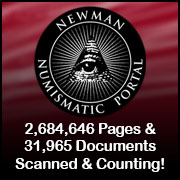
About UsThe Numismatic Bibliomania Society is a non-profit association devoted to the study and enjoyment of numismatic literature. For more information please see our web site at coinbooks.org SubscriptionsThose wishing to become new E-Sylum subscribers (or wishing to Unsubscribe) can go to the following web page link MembershipThere is a membership application available on the web site Membership Application To join, print the application and return it with your check to the address printed on the application. Print/Digital membership is $40 to addresses in the U.S., and $60 elsewhere. A digital-only membership is available for $25. For those without web access, write to: Charles Heck, Treasurer
AsylumFor Asylum mailing address changes and other membership questions, contact Chuck at this email address: treasurer@coinbooks.org SubmissionsTo submit items for publication in The E-Sylum, write to the Editor at this address: whomren@gmail.com BUY THE BOOK BEFORE THE COIN |
- WAYNE'S WORDS: THE E-SYLUM NOVEMBER 3, 2019
- NEW BOOK: NEBRASKA TRADE TOKENS 2020 THIRD ED.
- BOOK PREVIEW: IN GOD WE TRUST
- BOOK REVIEW: THE 100 GREATEST U.S. COINS
- BOOK REVIEW: MUDLARK
- NEWMAN PORTAL ADDS TELL-A-COIN GUIDE WHEEL
- VIDEO: 2019 US MEXICAN NUMISMATIC CONVENTION
- OBVERSE OR REVERSE?
- THOUGHTS ON THE HEADLESS SOLDIER MEDAL
- NOTES FROM E-SYLUM READERS: NOVEMBER 3, 2019
- DEBBIE MEISTER'S PERSONAL HALLOWEEN CHIPS
- VOCABULARY TERM: GALLANTRY MEDAL
- CHARLES GIBSON ROBERTS (1853-1905)
- HARVEY STACK'S NUMISMATIC FAMILY, PART 56
- ANS EXEC. DIRECTOR DR. WARTENBERG STEPS DOWN
- DR. GILLES BRANSBOURG NAMED ANS EXEC. DIRECTOR
- DR. JESSE KRAFT, ANS CURATOR FOR THE AMERICAS
- 2019 U.S. MINT NUMISMATIC FORUM HELD
- THE FUTURE OF COIN CONVENTIONS
- THE JOHN W. ADAMS COMITIA AMERICANA COLLECTION
- ARCHIVES INTERNATIONAL SALE 56 ANNOUNCED
- TUTANKHAMUN-ERA SILVER BAR OFFERED
- BYZANTINE GOLD COINS FOUND IN BULGARIA
- QIANLONG CHINESE COIN SWORD
- GOLD ZODIAC MOHURS OFFERED
- CARE HOME SEEKS PRE-DECIMAL COINS
- THE TUESDAY CLUB MEDAL
- ROYAL MINT SCRAPS OCTOBER 31 BREXIT COINS
- FIRM REPLACES MEN ON BANKNOTES WITH WOMEN
- GETTY CENTER WELL-FORTIFIED AGAINST WILDFIRES
- LOOSE CHANGE: NOVEMBER 3, 2019
- THE SHREK DONKEY COIN
- FEATURED WEB PAGE: COIN STRIKING STANDARDS
Click here to access the complete archive a
Click here to unsubscribe (scroll down)
To comment or submit articles, reply to whomren@gmail.com
Content presented in The E-Sylum is not necessarily researched or independently fact-checked, and views expressed do not necessarily represent those of the Numismatic Bibliomania Society.
WAYNE'S WORDS: THE E-SYLUM NOVEMBER 3, 2019
 New subscribers this week include: Tristyn Vineyard, courtesy of Jeffrey Zarit; and Dean Zimmerman. Welcome aboard! We now have 6,006 subscribers.
New subscribers this week include: Tristyn Vineyard, courtesy of Jeffrey Zarit; and Dean Zimmerman. Welcome aboard! We now have 6,006 subscribers.
Thank you for reading The E-Sylum. If you enjoy it, please send me the email addresses of friends you think may enjoy it as well and I'll send them a subscription (but let me know if they are located in the European Union). Contact me at whomren@gmail.com anytime regarding your subscription, or questions, comments or suggestions about our content.
This week we open with one new book, a preview and two reviews, plus updates from the Newman Numismatic Portal and several interesting reader comments.
Other topics this week include gallantry medals, collector Charles Roberts, personnel changes at the ANS, the U.S. Mint numismatic forum, the future of coin conventions, auction highlights from Archives International, a very, very early silver bar, a Byzantine coin find, a Chinese coin sword, Zodiac mohurs, and Brexit coins.
To learn more about Nebraska tokens, mudlarking, Tell-A-Coin Guide Wheels, how to tell an obverse from a reverse, circulating contemporary counterfeit coins, Numismatic Scrapbook, the circulation of Spanish-American silver in Scotland, "raw" medals, the Tuesday Club medal, the Marlene Dietrich banknote and the coin featuring Donkey from Shrek, read on. Have a great week, everyone!
Wayne Homren
Editor, The E-Sylum
NEW BOOK: NEBRASKA TRADE TOKENS 2020 THIRD ED.
Jim Ehlers and the Nebraska Token Collectors Club are producing a new edition of their Nebraska Trade Tokens book. -Editor
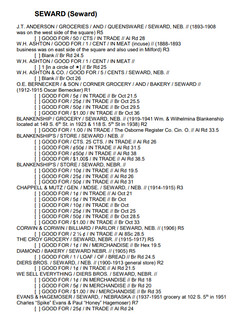 Nebraska Trade Tokens 2020
Third edition
Nebraska Trade Tokens 2020
Third edition
Compiled and edited by Jim Ehlers and the Nebraska Token Collectors Club.
We published our last reference book in 2009 and felt it was time for a complete update. I have added well over 2000 new tokens, updated the rarity guide, corrected past listing errors, added more historical information and dates the merchants were in business, and of course it has a maverick index. Due to the increased pages and cost of printing we went to a 2 volume set which is spiral ring bound with laminated covers and contains about 900 pages. We are planning on having the book available by mid March (hopefully sooner). Pre-publication price for the 2 volume set is $80.00 plus $8.00 postage if we receive your order by Dec. 31st, 2019. Orders received after Jan. 1, 2020 the price will be $90.00 plus $8.00 postage.
Payments can be made by check or money order payable to NETCC (Nebraska Token Collectors Club) send to Jerry Bentzinger 15671 Marcy Street Omaha, Ne 68118. If you would like a email confirming receipt of your order let Jerry know your email address. For additional information contact: Jim Ehlers 2540 E. 21st St. Fremont, Ne 68025 Email jehlers4@neb.rr.com
THE BOOK BAZARRE
BOOK PREVIEW: IN GOD WE TRUST
This article submitted by Whitman's Dennis Tucker includes more sample pages from Bill Bierly's upcoming book on the "In God We Trust" motto. Thanks! -Editor
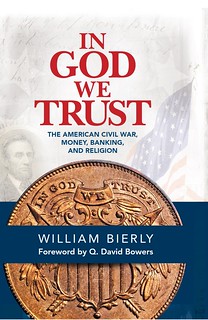 Sometimes in the numismatic world, it can
seem like there's nothing new under the sun—as if every subject has been researched, every story told. This is an illusion. In reality, numismatics is a living, breathing
discipline, rich with ongoing study, startling discoveries, and freshly revealed connections that span the depth and breadth of human experience. The story that William Bierly has
woven together in his new book, In God We Trust, illustrates this vibrancy.
Sometimes in the numismatic world, it can
seem like there's nothing new under the sun—as if every subject has been researched, every story told. This is an illusion. In reality, numismatics is a living, breathing
discipline, rich with ongoing study, startling discoveries, and freshly revealed connections that span the depth and breadth of human experience. The story that William Bierly has
woven together in his new book, In God We Trust, illustrates this vibrancy.
I met Bill several years ago after a meeting of the Chicago Coin Club, held at the American Numismatic Association's annual World's Fair of Money. We were introduced by Robert Leonard (another member of the Club, and a Whitman author). Bob assured me that Bill had a very promising manuscript proposal. Our conversation that followed convinced me that he was on to something big, something new and significant.
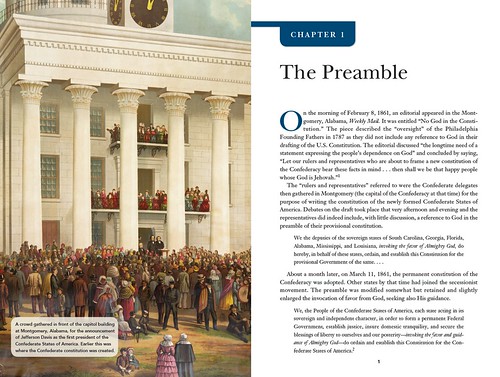
Many coin collectors know little of the national motto, "In God We Trust," beyond the knowledge summed up in a single sentence in the "Two-Cent Pieces" section of the Guide Book of United States Coins (the "Red Book"): "The motto IN GOD WE TRUST appeared for the first time on the new coin, with the personal support of Treasury Secretary Salmon P. Chase." The words are factual. But that's like saying, "Abraham Lincoln was elected president of the United States in 1860 and served during the Civil War"—and allowing this to be the sum of your knowledge of the man!
Articles about the motto have been published in numismatic magazines and journals over the years. None have approached the detail and intricacy that Bill Bierly brought to his research. From time to time, mainstream (non-numismatic) writers also mention "In God We Trust," often when school prayer, public prayer, the separation of Church and State, atheist lawsuits, and similar subjects are in the headlines. Articles in popular publications often gloss over the details, and sometimes even get the facts wrong.
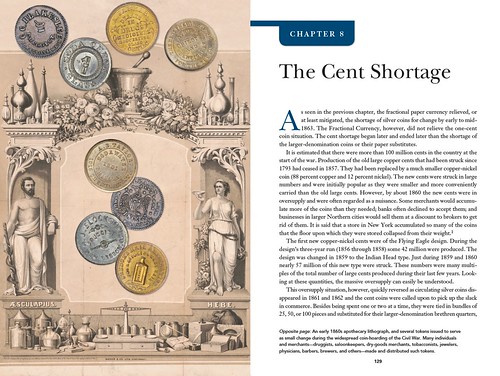
To set the record straight, Bill Bierly has followed leads, researched in archives and libraries, interviewed historians local and national, and gathered images. He has tracked down and dispelled rumors and half-true tales. And he has expanded the context of "In God We Trust" to show how the Civil War changed American banking, finance, and business forever. The result of his work is a fascinating exploration of a simple but profound four-word motto that has appeared on hundreds of billions of U.S. coins and paper-money notes.
In God We Trust is an important addition to the body of historical research, and a sterling example of how numismatics touches every aspect of American life.
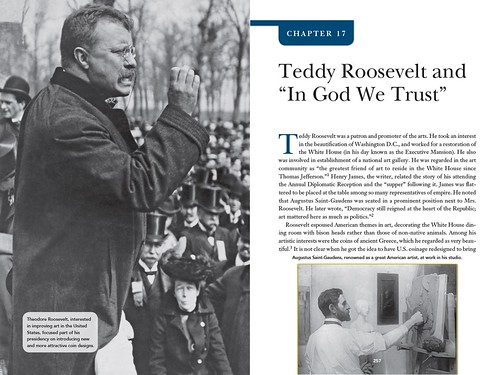
In God We Trust: The American Civil War, Money, Banking, and Religion
By William Bierly; foreword by Q. David Bowers
ISBN 0794845282
Hardcover, 6 x 9 inches, 352 pages, full color
Retail $29.95 U.S.
For more information, or to order, see:
https://www.whitman.com/store/Inventory/Detail/In-God-We-Trust+0794845282
To read the earlier E-Sylum article, see:
NEW BOOK: IN GOD WE TRUST (https://www.coinbooks.org/v22/esylum_v22n41a04.html)
BOOK REVIEW: THE 100 GREATEST U.S. COINS
Dennis Tucker of Whitman Publishing passed along this review of The 100 Greatest U.S. Coins by megacollector Dell Loy Hansen, who is working to assemble a complete collection of circulation-strike U.S. coins. The book has just been updated to its fifth edition. -Editor
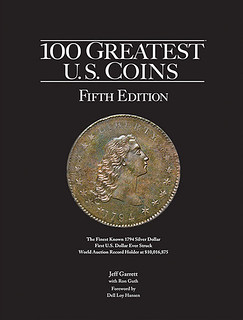 The 100 Greatest U.S. Coins,
now in its fifth edition, by Jeff Garrett and Ron Guth, has been a valuable constant in the ever-changing sea of coin collecting. As a casual collector in my early twenties, I was
always intrigued by coins, and I enjoyed opening my album with my U.S. type set. Once I was established in my career and had some free time to consider the hobby again, I ran
across this volume and my interest was rekindled. Initially, I was drawn to the $20 Saint-Gaudens double eagles. Several months later I was able to complete that set and my
collecting habit hit a wall.
The 100 Greatest U.S. Coins,
now in its fifth edition, by Jeff Garrett and Ron Guth, has been a valuable constant in the ever-changing sea of coin collecting. As a casual collector in my early twenties, I was
always intrigued by coins, and I enjoyed opening my album with my U.S. type set. Once I was established in my career and had some free time to consider the hobby again, I ran
across this volume and my interest was rekindled. Initially, I was drawn to the $20 Saint-Gaudens double eagles. Several months later I was able to complete that set and my
collecting habit hit a wall.
It was then that I decided to study further designs and denominations. Once I examined the beautiful examples of some of America's best artwork within the pages of the 100 Greatest U.S. Coins, I was inspired to dust off my collector hat and go treasure hunting once again. Determined to reach an almost impossible goal of widening my collection to include an example of every circulation-strike U.S. coin, I found myself flipping through the book yet again as I strategized my way from impossible dream to attainable reality.
Now, a few years into my goal to eclipse the famous collection of Louis Eliasberg by stretching the date range from 1792 to the present, I continue my quest and grow closer to its resting point. The nearness to my goal only whets my appetite for solid resources with accurate histories and beautiful artistry. The quality craftsmanship of 100 Greatest U.S. Coins once again rises to the top of my stacks, each edition serving to make the book richer and more deeply compelling than the last. With this newest edition, I look forward to delving even more into this one-of-a-kind treasure map. An irreplaceable title, it has become one of my favorite go-to items in my library and is a numismatic classic in its own right.
If it's true that behind every great collection stands a persistent adventurer with a treasure map rolled up in his back pocket, this book is that map. And like any treasure, the coins found inside are as tantalizing as they are timeless.
Dell Loy Hansen, a lifelong resident of Utah, began his career as a homebuilder during college at Utah State University, then went on to become a developer, investor, and creator. In 2016 he found time to return to his former hobby of coin collecting. He soon committed to pursuing a collection that would exceed even that of Louis Eliasberg, expanding on the latter's collection dates to include coins up to the present year. After three years on his "Eliasberg" quest he has very nearly reached his goal.
Hansen is the founder and chief executive officer of the Wasatch Group and owner of the major-league soccer club Real Salt Lake. In 2018 he partnered with John Brush to purchase David Lawrence Rare Coins.
100 Greatest U.S. Coins, 5th edition
By Jeff Garrett with Ron Guth; foreword by Dell Loy Hansen
ISBN 0794846475
Hardcover, coffee-table (10 x 12 inches)
144 pages
Full color
Retail $29.95 U.S.
https://www.whitman.com/store/Inventory/Detail/The-100-Greatest-Coins-5th-Edition+0794846475
NOTE: The new fifth edition hasn't been discussed before in The E-Sylum. For more information on the book itself, see the earlier article on the fourth edition. -Editor
To read the earlier E-Sylum article, see:
NEW BOOK: 100 GREATEST U.S. COINS, 4TH ED (https://www.coinbooks.org/esylum_v17n41a04.html)

BOOK REVIEW: MUDLARK
We've often discussed the numismatic finds of "mudlarks", the people who comb the banks of London's Thames River in search of old coins, artifacts and other residue of the centuries-old city. Here's an excerpt from a Wall Street Journal review of a new book on these people and their finds. -Editor
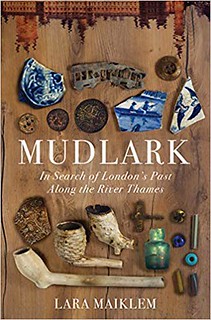 London's Thames is a tidal river. The height
between high and low water can vary from 22 feet to 15, revealing yards of muddy foreshore at its ebb. Until the early 20th century, the city's poorest—mostly old women and
children—eked out a living by dredging this sludge for coal, rope and bits of iron, which they would sell for a pittance. The Victorian journalist and reformer Henry Mayhew
estimated that by the mid-1880s there were around 280 "mudlarks" splashing their way through the mire, pursuing their slim pickings with "a stolid look of wretchedness," rags
stiff, "bodies bent down while they peer anxiously about."
London's Thames is a tidal river. The height
between high and low water can vary from 22 feet to 15, revealing yards of muddy foreshore at its ebb. Until the early 20th century, the city's poorest—mostly old women and
children—eked out a living by dredging this sludge for coal, rope and bits of iron, which they would sell for a pittance. The Victorian journalist and reformer Henry Mayhew
estimated that by the mid-1880s there were around 280 "mudlarks" splashing their way through the mire, pursuing their slim pickings with "a stolid look of wretchedness," rags
stiff, "bodies bent down while they peer anxiously about."
If Victorian mudlarking was a matter of miserable necessity, then modern mudlarking, an activity halfway between archaeology and beachcombing, is becoming something of an urban craze. The pastime of hunting for washed-up "treasure" in the muddy flats of the Thames has increased in popularity to the point where entire areas have been left pitted by excavation, and a special license is now needed if you want to use a metal detector or dig below the crust of the mud. Mudlarking even has a literature of its own: Its chroniclers include Simon Wilcox, author of the travelogue "Mudlark River: Down the Thames With a Victorian Map" (2014), and Ted Sandling, whose gorgeously illustrated "London in Fragments: A Mudlark's Treasures" (2016) offers an irresistible introduction to the thrill of the hunt.
Enter Lara Maiklem, who has been combing the 95 miles of the foreshore for more than a decade. "Mudlark" is her engrossing front-line report from "a world of escapees and obsessives" who think nothing of scaling the perilous riverside ladders at odd hours, dressed in waterproofs and latex gloves, on the lookout for whatever traces of the past the river might spit up. Usually these are "the tiniest of objects": "buttons that burst off waistcoats long ago, rings that slipped from fingers, buckles that are all that's left of a shoe." These are the personal possessions, as she enthuses, of ordinary people—"each small piece a key to another world and a direct link to long-forgotten lives."
Until the mid-20th century such fragments were regarded as mere bric-a-brac, or history out of context at best. Today, however, the foreshore is acknowledged as an important archaeological site. Thames mud is a remarkable preservative. It is anaerobic, which means it lacks oxygen, so that materials that would normally perish—wood, leather, iron and fabric—emerge from it looking just as they did when they fell into the river. Ms. Maiklem takes us on a tour of the city's "riverine history book" that follows the eastward passage of the Thames itself, from its tidal head at Teddington to its confluence with the North Sea at the Estuary. It's a riveting crash course not only in the history of London from prehistoric times to the present, but also in urban geography and how to read a living environment from organic clues.
To read the complete article, see:
‘Mudlark' Review: The Stories the River Can Tell
(https://www.wsj.com/articles/mudlark-review-riverbank-bric-a-brac-11572619645)
For more information, or to order on Amazon, see:
Mudlark: In Search of London's Past Along the River Thames 1st Edition
(https://www.amazon.com/Mudlark-Search-Londons-Along-Thames/dp/1631494961)
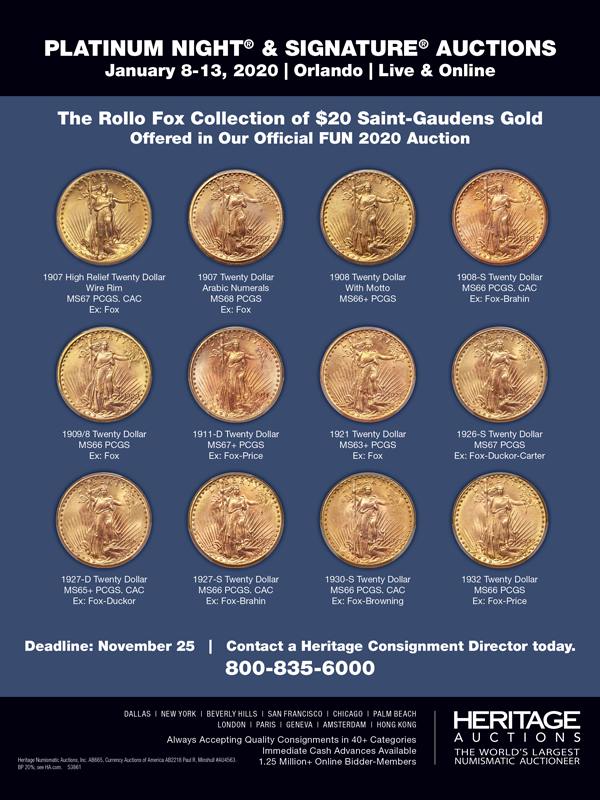
NEWMAN PORTAL ADDS TELL-A-COIN GUIDE WHEEL
The latest addition to the Newman Numismatic Portal is a Tell-A-Coin Guide Wheel for Lincoln Cents. Project Coordinator Len Augsburger provided the following report. -Editor
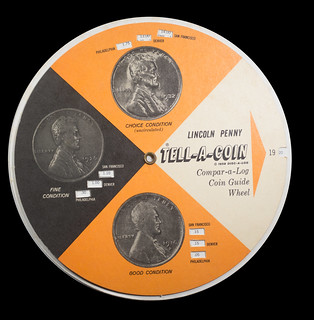 Recently added to Newman Portal
are a number of images from the Eclectic Numismatic Treasure collection. Included is this "Tell-a-Coin" guide wheel, copyright 1958 by Disc-A-Log. This device was obviously
intended as a rudimentary guide to grading and pricing Lincoln cents, and variants are known for Buffalo nickels, Mercury dimes, and Standing Liberty quarters).
Recently added to Newman Portal
are a number of images from the Eclectic Numismatic Treasure collection. Included is this "Tell-a-Coin" guide wheel, copyright 1958 by Disc-A-Log. This device was obviously
intended as a rudimentary guide to grading and pricing Lincoln cents, and variants are known for Buffalo nickels, Mercury dimes, and Standing Liberty quarters).
The wheel allows the user to price each coin in the series in three grades, Good, Fine, or Uncirculated, by rotating the wheel to the desired date at the right. Invented at a time when the popularity of coin collecting was rapidly increasing, the device might have been marketed along with coin folders or other supplies. Its ultimate utility seems dubious – the same information was available in many other places, most notably the Guide Book. Perhaps this novelty was simply more "fun" to use? In any case, there are many unanswered questions – who manufactured these, who sold them, and who used them?
Can anyone help? Who was behind the Disc-A-Log company? -Editor
Link to Eclectic Numismatic Treasure image collections on Newman Portal:
https://nnp.wustl.edu/library/imagecollections?hpp=true&page=14
VIDEO: 2019 US MEXICAN NUMISMATIC CONVENTION
These are selections from the David Lisot Video Library that feature news and personalities from the world of coin collecting. David has been attending coin conventions since
1972 and began videotaping in 1985. The Newman Numismatic Portal now lists all David's videos on their website at:
https://nnp.wustl.edu/library/multimediadetail/522852
Here's one on the recent US Mexican Numismatic Association convention in Scottsdale, AZ. -Editor
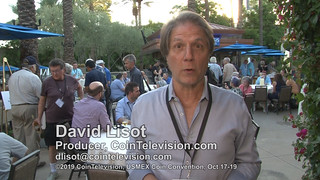 US Mexican Numismatic Convention
Opening & Awards Ceremony 2019: VIDEO: 11:08.
US Mexican Numismatic Convention
Opening & Awards Ceremony 2019: VIDEO: 11:08.
Cory Frampton & Kent Ponterio, Directors, US Mexican Numismatic Association, David Lisot, Video Producer, CoinTelevision.com.
The 8th Annual US Mexican Numismatic Association was held again in Scottsdale. The convention hosts a welcoming poolside event where awards were handed out for best articles and service to the organization. Find out why this convention is a place where collectors and dealers want to come.
An excerpt of the video is available for viewing on the Coin Television YouTube Channel at:
https://youtu.be/VKHG91C9qGc
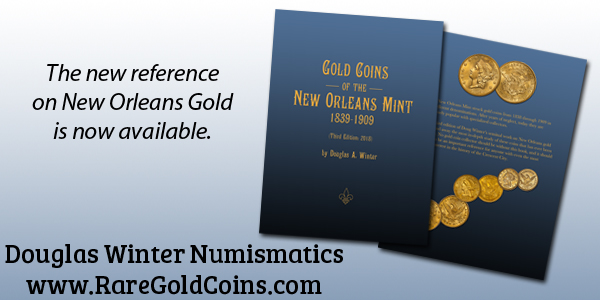
OBVERSE OR REVERSE?
Last week's article by Dennis Tucker of Whitman Publishing on the new edition of A Guide Book of United States Type Coins by Dave Bowers mentions the internal Whitman Style Guide. -Editor
Dennis wrote:
I remember well the many conversations we had on what constitutes a "type" versus a "subtype" or "variety." Nomenclature wasn't completely standardized within the hobby community. (It still isn't, today.) Was the Braided Hair large cent properly divided into the Young Head and Matron Head types? Was the half cent of 1840 to 1857 the Coronet type, or the Braided Hair type? Did Christian Gobrecht's nineteenth-century silver coins show "Seated Liberty" or "Liberty Seated"? Some writers referred to Franklin half dollars as the "Franklin Head" type. Should trade dollar be capitalized or not? Much of this terminology had long been standardized within the Red Book and the Blue Book, but Dave Bowers's study and classification of coin types for his new book revealed opportunities for clarification and, in some cases, change.
All of this discussion was very useful because we were also organizing a comprehensive new "Whitman Style Guide" to apply across the width and breadth of all the company's books, folders, albums, and other hobby products.
For reference, here are the coin images from the previous article. -Editor
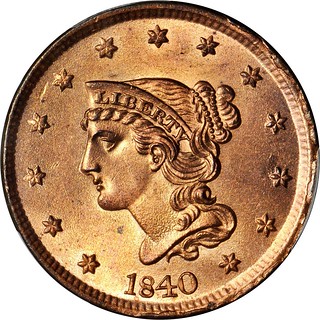
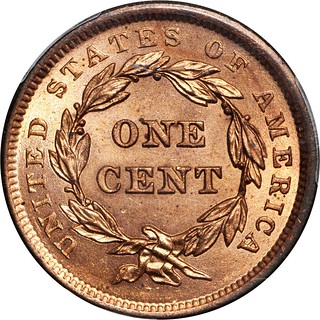
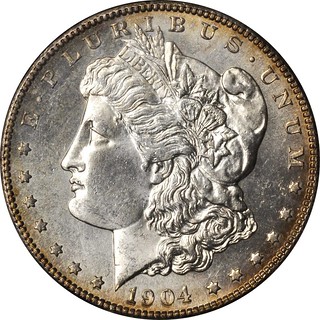
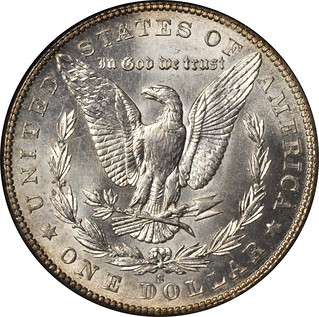
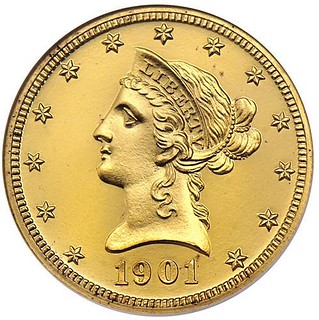
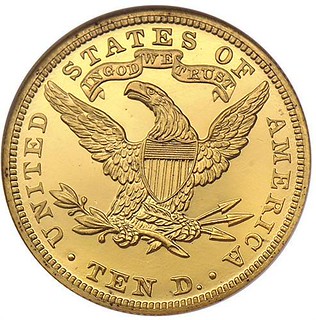
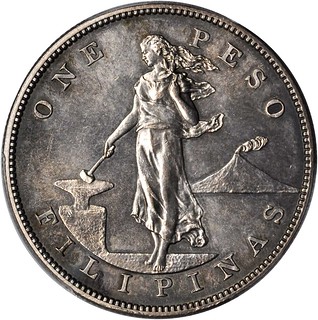
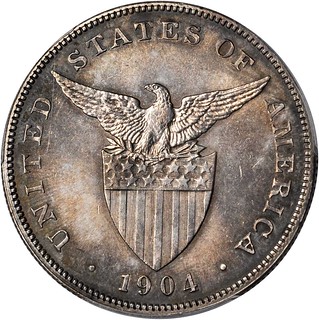
I asked:
What exactly is the definition of obverse and reverse? Three of the illustrated coins have the denomination, eagle and country on the reverse, and the date on the obverse. But the Philippine peso is different - the denomination and country are on the obverse and the date is on the reverse.
I know this is never easy, but how does your guide parse the Philippine coin?
Here's a thoughtful response from Dennis. Thanks! -Editor
Great question, and I don't have a tidy answer!
US/Philippine coins have been featured in the Red Book since 1960. They've always been cataloged therein with the FILIPINAS side (as opposed to the UNITED STATES OF AMERICA side) set as the obverse. Of course, longstanding tradition alone isn't enough reason for "the ways things are done" in the Red Book, although it does carry some weight. (As we bibliomaniacs know, the Red Book has its share of peccadilloes; we constantly get letters and emails about "Why is this British token included in a book on U.S. coins?!" and sometimes the answer is simply, "That's what the hobby community has come to collect and regard as ‘American' over the past 150 years.")
Regarding the USPI coins: I would have to check the legislation and early Mint/Treasury records to see if there was any official designation of which side was which. That might have been Yeoman's guide from the start, and I don't recall offhand (not that I was around back then!) if any reasoning was ever documented.
Interestingly, I had a conversation with QDB and some other folks this week about whether USPI coins should be considered "foreign coins struck by the United States."
A great topic, and one that will probably never have any tidy answers. The world of numismatics is complex, as is the larger world around it. But to the extent that humans can bring some sense of order to the world, it helps our understanding and communication about the issues. Classification systems are a worthy endeavor and goal even if a perfect end state is likely unobtainable. They help us ask the right questions, and that's the first step in finding answers. Thanks, Dennis.
This discussion has been about U.S. coins, and more specifically about how they are described in the Whitman family of publications. I haven't researched other definitions of the terms 'obverse' and 'reverse'. That would be an interesting study, and I'm sure usage has shifted at least somewhat over time. How do other numismatic publishers address this question today? -Editor
To read the earlier E-Sylum article, see:
NEW BOOK: GUIDE BOOK OF U.S. TYPE COINS, 3RD ED. (https://www.coinbooks.org/v22/esylum_v22n43a02.html)
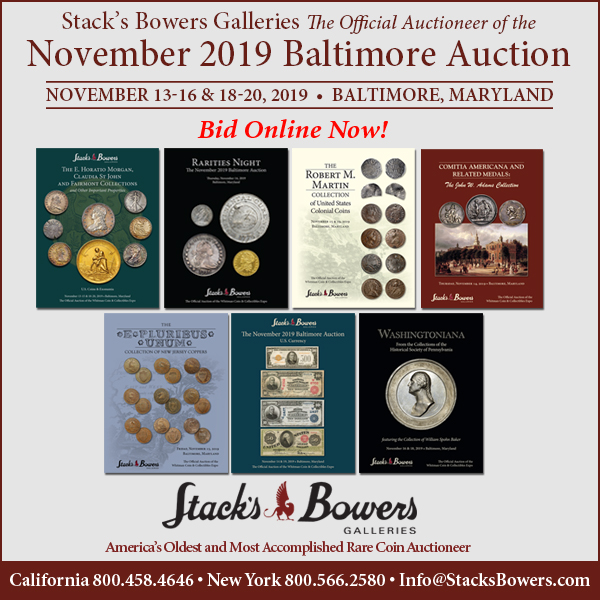
THOUGHTS ON THE HEADLESS SOLDIER MEDAL
Last week John Sallay submitted this grisly award medal for reader assistance. -Editor
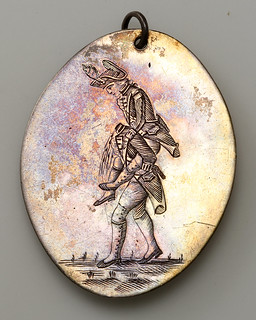
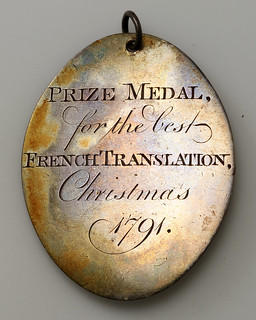
ANA Edition Jeremy Schneider writes:
"Seeing the headless soldier medal, my first thought was French Revolution? Purely speculation, but based on the date, inscription, and clothing this would be my best guess."
Alan V Weinberg writes:
"Extraordinary graphics on John Sallay's unique hand-engraved medal. I've always had a collector's fondness for early, skillfully hand-engraved medals, each one by its nature unique.
"My perception of the image of the uniformed officer piggy-backing on a bloody headless victim: a comment on either the civilian victims of a warring military OR a comment on officers staying behind the lines in safety as the common soldiers bear the brunt of the war violence.
"In any case an image unlike any I've seen before except for the socially critical images found on select British Conder tokens."
John Lupia writes:
"John Sallay is amazing to have the wits to select this political medal during the heat of tensions between Germans, French, and the British. It seems reasonable and fair to say this is no academic award, at least no academy or school is known to have such issue or else it would have been readily recognized. So the next thought went to clubs like the Tuesday Club. This is where I believe this sort of ribald political joke makes its home.
"Antoine de Rivarol, Causes of the Universality of the French Language (1784) published this work receiving a medal, the Berlin Academy Prize. It was translated from the French in 1789. This work criticizes England, the English, and the English language. I suspect the headless figure to be Count de Rivarol, which the editor of The Monthly, January-April, 1790, page 278, footnote points out how the translator calls him Count de Rigmarole. When he was moved to the head of the class he apparently left it there."
Political satire is timeless, although the meaning can become lost on subsequent generations. John Lupia's suggestion is quite plausible. -Editor
John Sallay writes:
"I tracked down the article in The Monthly (January-April, 1790, pages 278-280) that John Lupia references. Both he and Alan Weinberg could be on to something, though satirizing not only the Count de Rivole, but also Prussian King Frederick the Second, and the French author of a biography of Frederick which had been translated into English in 1789.
"This article from The Monthly with the footnote (page 279) referring to the Count de Rivarole is a book review of a translation from the French of "The Life of Frederick the Second, King of Prussia" by J. Charles Laveaux (London, printed for J. Debrett, 1789). The review is extremely and satirically negative, sparing few opportunities to pillory both the French writer and the German King Frederick. The key passage from the review describing the King's cowardice, which Alan suggests, is:
"M. de Laveaux, among other absurdities which he has copied from that writer, presents us with the anecdote which speaks of his Majesty's terror at the beginning of the battle of Sorr, of his flying from it, and of his having concealed himself in a mill, at a considerable distance from the field of action. A very likely story! and which he has improved by the following witticism: 'Wits have repeated on this occasion, what was said of a French general, who had likewise hid himself in a mill during a battle in which his troops were victorious: He has covered himself with glory – and with flour *. (with the asterisk referring to the footnote that John identified).
"Pending another explanation, this does seem like a plausible explanation, or at least a solid lead. It doesn't clarify whether this medal might have been made for a school, social club, or other setting, but it certainly provides a line of attack for some further digging. Many thanks to both Alan and John for their insights."
Thanks, everyone - very interesting item! For some background on the above-mentioned Tuesday Club medal, see another article elsewhere in this issue. -Editor
To read the earlier E-Sylum article, see:
HEADLESS SOLDIER MEDAL INFORMATION SOUGHT (https://www.coinbooks.org/v22/esylum_v22n43a14.html)
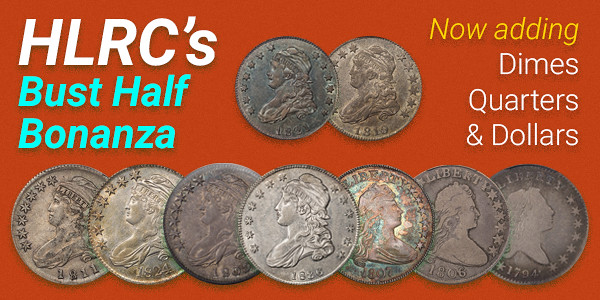
NOTES FROM E-SYLUM READERS: NOVEMBER 3, 2019
Winston Zack Book Signing in Baltimore
In his David Kahn Rare Coins November 2019 News and Newps newsletter David Kahn writes:
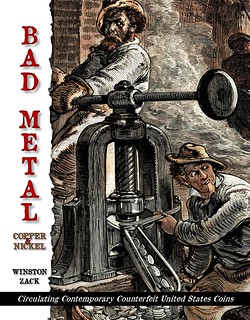 "Our good friend, noted researcher
and very accomplished author Winston Zack has just published a fabulous new book on counterfeit US coins titled, Bad Metal, Circulating Contemporary Counterfeit United States
Coins. This first volume, a 265 page, full-color masterwork, covers copper and nickel coins, and in great, very-well researched detail.
"Our good friend, noted researcher
and very accomplished author Winston Zack has just published a fabulous new book on counterfeit US coins titled, Bad Metal, Circulating Contemporary Counterfeit United States
Coins. This first volume, a 265 page, full-color masterwork, covers copper and nickel coins, and in great, very-well researched detail.
"I have been an avid collector of these coins since the mid 1980's, and have wanted to read this book since then. Now, I can do just that, and so can you! We have the books in stock here at the office, and they will make their debut at our Baltimore table, #930. Winston will be there as well to sign your new book, if you wish, and he will also have a special, introductory sale price in effect. If you can't make the show, I'm sure we can still get you a signed copy at the special price, plus shipping, of course. After the show, they will be listed on our website."
For more information on the book, see the earlier E-Sylum article linked below. Be sure to stop by Dave's table if you're at the show later this month. I expect to be there Friday afternoon. -Editor
To read the earlier E-Sylum article, see:
NEW BOOK: BAD METAL (https://www.coinbooks.org/v22/esylum_v22n31a07.html)
Thoughts on Numismatic Scrapbook
Jeff Zarit writes:
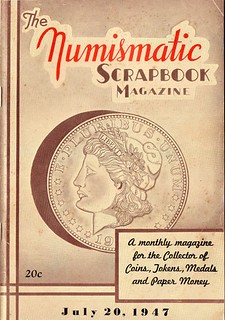 "I recently
purchased a set of Numismatic Scrapbook Magazines from the 1950's-1970's on eBay as the information in them is just as pertinent today as it was then. The advertisements,
however, are very strange. And many of them are laughable. However, there seemed to be a great amount of material for sale; I wonder what happened to it?
"I recently
purchased a set of Numismatic Scrapbook Magazines from the 1950's-1970's on eBay as the information in them is just as pertinent today as it was then. The advertisements,
however, are very strange. And many of them are laughable. However, there seemed to be a great amount of material for sale; I wonder what happened to it?
"On any article I read last night about the 1913 ‘V' nickel, it said that there were 2 proofs struck and 3 business strike. I did not know that. It also said that the first time these were displayed in 1920, there was a copper Buffalo nickel included, but a couple of issues later, a numismatist who purchased the estate of that owner, said that the Buffalo nickel was a counterfeit.
"In the 1950's Indian head cents were trading at 5 cents each by the hundred or thousand. Civil War tokens at 60 Cents each in groups of hundreds or thousands. Just unusual quantities of such items. I wonder, 60 years later, what happened to them.
"My field of world coins (and gold was $20 per ounce then), Gothic crowns at $15 each. All the rare coins at pennies on the dollar compared to today. And many of the commoner silver crowns were very inexpensive compared to today. However not all was better. World proof sets and mint sets were advertised in many years, at prices generally higher than today, as they are not so popular today. Curacao 2 ½ Gulden Crowns 1944, were trading at $20 each, and today, I melt them. Still the articles by Bob Julian about early US coins were top rate."
Those were the days. Do we have any old-timers reading this who saw or bought and sold coins and tokens in bulk back then? -Editor
Whitman Coin Supply Merchandiser Sought
Researcher and author David Lange writes:
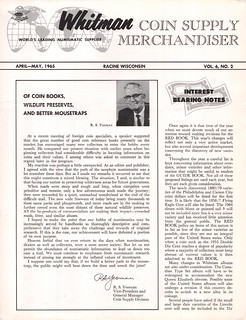 "Some of the
best material I've found for my book on Whitman folders and albums has come from the company's newsletter for its dealers, Whitman Coin Supply Merchandiser. It
seems to have been in print 1960-66, but I have just a few issues from 1965-66. I'd really like to acquire or at least examine the remaining issues, and I'm hoping that a
reader may be able to supply all or some of them."
"Some of the
best material I've found for my book on Whitman folders and albums has come from the company's newsletter for its dealers, Whitman Coin Supply Merchandiser. It
seems to have been in print 1960-66, but I have just a few issues from 1965-66. I'd really like to acquire or at least examine the remaining issues, and I'm hoping that a
reader may be able to supply all or some of them."
Now THAT'S an obscure periodical. And quite useful for this research. It would have only been available or useful to retailers (including coin dealers). Does anyone have copies? Dave can be reached at DavidWLange@outlook.com . -Editor
To read the earlier E-Sylum article, see:
WHITMAN 1940-1978 ALBUMS AND FOLDERS INFO SOUGHT (https://www.coinbooks.org/v22/esylum_v22n43a10.html)
Canadian Blacksmith Coppers Facebook Group
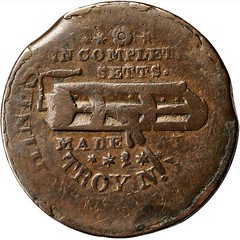 Moderator John Lorenzo writes:
Moderator John Lorenzo writes:
"Since Yahoo Groups as a whole is deleting all the archive files/photos of any coin groups in/around mid-December leaving only real-time communications via E-Mail and no photo uploads, etc, a new group has been formed on Facebook. Group name - Canadian Blacksmith Coppers. Just Search/Join."
To visit the new group on Facebook, see:
https://www.facebook.com/groups/2468651330047449/
More Paperboy Collection Lessons
Howard A. Daniel III writes:
"I read the Paperboy Collection Lessons and it reminded me of my days as a paperboy from 1952 to 1955 when I lived in Fort Lauderdale, Florida and was in the 6th grade at Southeast Elementary School at the intersection of South Andrews Ave and SE 7th St, then to Naval Air Junior High School, which is now the Fort Lauderdale International Airport (a school bus took me to and from school). I walked to and from the house my parents rented at the intersection of SE 6th St and SE 5th Ave. After school, I like to walk home up Andrews Ave to New River and then walk along the river looking at the water and the boats. There was an "antique" store on Andrews Ave that I used to stop in and look in a cigar box with Indian Head Cents and Liberty Head coins in it. The prices were 5 Cents over the face value! Not very often I would have enough to buy and Indian Head Cent.
"I noticed some kids picking up newspapers at a nearby Miami Daily News office. I walked in and asked if I could also sell their newspapers. I was a skinny runt at the time and the man wanted to get rid of me but I insisted. He asked where I lived and I told him it was only a block away from US-1. He said no one was selling his Racing Edition in that area and that I could sell 25 copies a day. It was quite a task to carry the newspapers home and then to the intersection of US-1 a couple of blocks south of New River at the intersection of SE 7th St. I carried 5 papers between the lanes of cars when the light changed to red. Many of the tourists were headed south to the race tracks and immediately cleaned me out of my Racing Editions! I needed many more than 25 copies but there was no way I could carry them!
"I walked into the nearby drug store and asked the manager if my papers could be delivered to just inside his store. He agreed! I bought a malted milk shake from him every day to thank him and myself. The next day I told the newspaper man I need many more papers to sell. He was quite happy. He delivered 50 copies to the drug store and I kept raising it until I was selling 250 an afternoon within an hour or two! I was making $12.50 a day! Within a couple of months, I had cleaned out the cigar box and the owner held all of the coins he acquired for me to buy. My customers also gave me coins I put into my collection, to include silver dollars!
"My earnings were a fortune in my family so I gave my mother half of it. I was making more than my dad but my mother and I never told him because I did not want to hurt his pride. From that day, all of my clothes, school supplies, etc., were bought with my earnings, and that continued when I had other jobs after we moved to far west side of Fort Lauderdale, until I graduated from high school in 1959 and enlisted in the Army."
Very resourceful! Great story - thanks. -Editor
To read the earlier E-Sylum article, see:
NOTES FROM E-SYLUM READERS: OCTOBER 27, 2019 : More Paperboy Collecting Stories
(https://www.coinbooks.org/v22/esylum_v22n43a07.html)

DEBBIE MEISTER'S PERSONAL HALLOWEEN CHIPS
Pete Smith writes:
"Many members of the Casino Collectibles Association, previously known as Casino Chip and Gaming Token Collectors Club, produce personal chips with the same materials as casino chips. These are traded like "handshake tokens" at their annual conventions. Some include the name of the collector and some are issued without names. I have probably seen more than a hundred with Halloween themes.
"Here are images of a dozen issued by Debbie Meister, one of the prolific issuers of Halloween pieces."
Thanks. Nicely done. -Editor
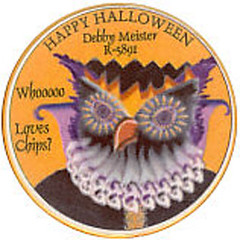
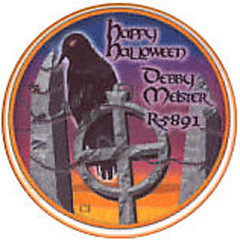
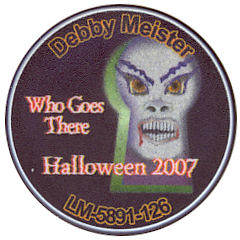
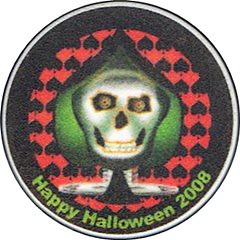
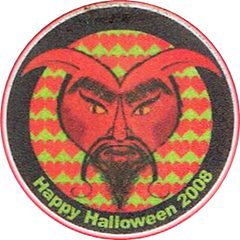
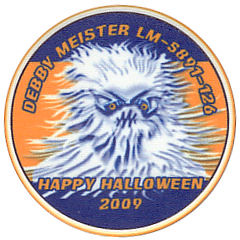

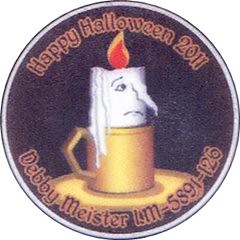
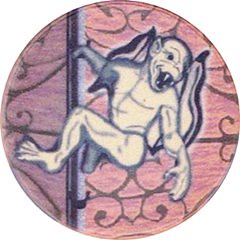
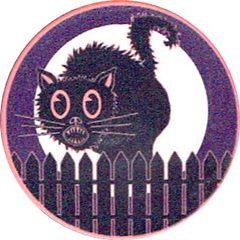
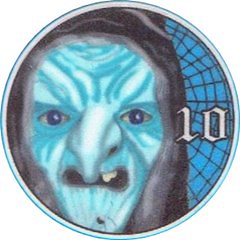
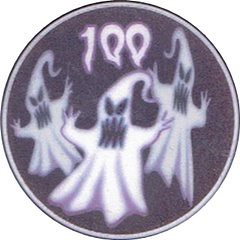
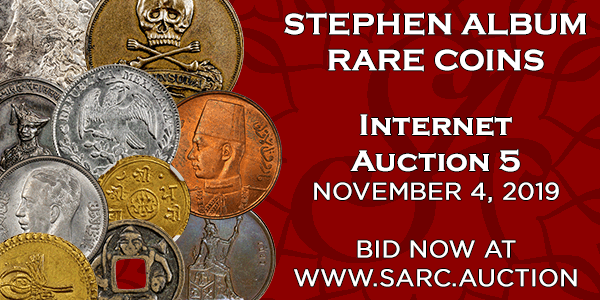
VOCABULARY TERM: GALLANTRY MEDAL
Dick Johnson submitted this entry from his Encyclopedia of Coin and Medal Terminology. Thanks. I added an image of the Conspicuous Gallantry Cross. -Editor
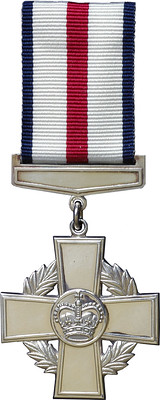 Gallantry
Medal. A medallic item bestowed for noble and chivalrous behavior; early such medals were bestowed to knights, in modern times moreso to heroes of military action. Gallantry
medals have followed the change in the definition of the word gallantry since the time of the crusades.
Gallantry
Medal. A medallic item bestowed for noble and chivalrous behavior; early such medals were bestowed to knights, in modern times moreso to heroes of military action. Gallantry
medals have followed the change in the definition of the word gallantry since the time of the crusades.
History of gallantry medals. In feudal times gallantry meant the chivalrous actions of men toward women, as the knight who was charged with the protection of ladies (as during travel). This noble action was the basis for some early orders, societies of men whose purpose was civilized behavior. (Makes one wonder what uncivilized conditions existed during feudal times!) These orders (societies) sometimes took on a religious manner, in others a military nature. They were often organized by royalty. The lowest rank was the knight or chevalier, with as many as four to seven classes, the highest class would be that of the king.
The badges of these orders were considered gallantry medals and each class was more distinct than those below it. Thus the class of the badge indicated the rank of the recipient, differing by larger size, more elaborate design, more jewel encrusted, in more precious metal and such. These decorations were usually made by jewelers and employed much of the technology of medal making (diestruck blanks, enameling, goldplating, fabricating, suspension and such).
Modern gallantry medals. In the middle of the 19th century medals were created and bestowed for gallantry – exceptional or brave action in military battle. England established the Distinguished Conduct in the Field Medal in 1854, the Conspicuous Gallantry Medal in 1855, the Sea Gallantry Medal and others as military actions dictated, or with a new monarch (the Victoria Cross bore the portrait of the queen and was a gallantry medal). With the introduction of air battles, a gallantry medal for the Royal Air Force was established. Other countries followed in similar fashion in Germany, France and most combative countries of the world.
In the United States gallantry medals include the Congressional Medal of Honor, Purple Heart. These are made at the U.S. Mint and by private medal manufacturers; here again using much of the same technology of medal making discussed in this encyclopedia.
Gallantry medal distinction. To add distinctiveness (and exclusiveness) to a gallantry medal they are purposely designed with the full range of medal characteristics in mind. They are designed in unusual shape sometimes with exotic trimming, with openwork, sometimes with multiple enamel and enameling. Their suspension is more detailed, often with elaborate ribbons, headers and devices.
Since gallantry medals are the highest rank of a nation's decorations, they are purposely designed to look distinctive by shape and elaborate decoration. This is in contrast, say, with campaign medals or victory medals, which are both usually round and usually widely distributed to all who participated in a campaign or military service.
Looking for the meaning of a numismatic word, or the description of a term? Try the Newman Numismatic Portal's Numismatic Dictionary at: https://nnp.wustl.edu/library/dictionary
Or if you would like a printed copy of the complete Encyclopedia, it is available. There are 1,854 terms, on 678 pages, in The Encyclopedia of Coin and Medal Technology. Even running two a week would require more than 19 years to publish them all. If you would like an advance draft of this vital reference work it may be obtained from the author for your check of $50 sent postpaid. Dick Johnson, 139 Thompson Drive, Torrington, CT 06790.
CHARLES GIBSON ROBERTS (1853-1905)
Charles Gibson Roberts (1853-1905), was born on September 30, 1853, in Baltimore, Maryland, son of William H. Roberts, and Elizabeth D. Roberts.
Outside of an old postal card laying in heaps among the Chapman Archive material I found this one of an unknown gentleman who held a small collection of gold pieces. Yet the few items he held included a $3 gold piece and a 1795 Eagle! We cannot know if it was the rare 9 leaves Capped Bust small Eagle type since that variety was not yet known as a variety before the 1930's. I have searched high and low looking for Mr. Roberts! He evidently was a man who knew the coins he held had premium values for collectors and he very probably held them a long time until late in life when he probably needed the income from them more than his joy of holding them.
There was a Dr. John B. Roberts at Philadelphia, a client of the Chapmans, but that appears to be mere coincidence and no relation.
Curiously, he writes to Chapman & Sons. As I have already shown a long time ago it was Henry Chapman, Sr., the father of the two famous coin dealers who was a tea merchant and was the first in the family to enter into the field of monetary exchange in the 1870's. He was shrewd and placed his sons with John White Haseltine to learn the coin trade since he saw a bright future in it for his sons. Contacting a relative who designed a working cabinet for typographic type and matrices Henry Sr., saw a practical application for it in the coin business.The family built these to sell to others advertising them in 1878. It is possible that Mr. Roberts may have been involved somehow with their manufacture. That is purely speculative and a basic logical exercise since that so far is the only common thread besides coins that could link Roberts to Chapman & Sons appealing to them as established dealers to help him liquidate his small cache.
The 1880 U.S. Census lists him as single living in a boarding house at 36 North Exeter Street, Baltimore, Maryland, working as a carpenter.
Roberts correspondence with the Chapman Brothers feeling them out about consigning his gold and other coins to them for their next coin auction which was held on February15-16, 1904. Note the form of address on the postal card Chapman & Sons, suggesting he was more acquainted with Henry Chapman, Sr., than Henry, Jr., or his older brother Sam. We do also note that the next Chapman auction did sell an 1873 $3 gold piece possibly that one mentioned by Roberts to the Chapman Brothers expressing to them his wishes to sell. Three consignors were named in that sale leaving us to wonder if Roberts is the source of any of the items. It seems very tenable that the Chapmans took the opportunity to acquire the gold pieces and certainly if any were purchased without doubt the 1795 Eagle was acquired. Roberts says his piece is "fine". In 1903 a VF coin frequently was simply called fine by many. The NGC has a population report for the 13 leaves below Eagle type with 11 registered in VF condition, and CAC reports only 1 specimen VF-35, and 2 EF-40, either of which grade most probably was the condition of his piece.
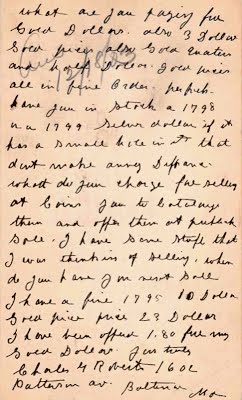 "What are
you paying for Gold Dollars. Also 3 Dollar Gold piece, also Gold quarter and half Dollar? Gold pieces all in fine Order. Perhaps have you in stock a 1798 or a 1799 Silver Dollar?
If it has a small hole in it that doesn't make any difference. What do you charge for selling at coins? I am to catalogue them and offer them at public sale. I have some stuff
I was thinking of selling. When do you have your next sale? I have a fine 1795 10 Dollar Gold piece 23 Dollars. I have been offered $1.80 for my Gold Dollar. Yours truly, Charles
G. Roberts, 1602 Patterson Ave., Baltimore, Md."
"What are
you paying for Gold Dollars. Also 3 Dollar Gold piece, also Gold quarter and half Dollar? Gold pieces all in fine Order. Perhaps have you in stock a 1798 or a 1799 Silver Dollar?
If it has a small hole in it that doesn't make any difference. What do you charge for selling at coins? I am to catalogue them and offer them at public sale. I have some stuff
I was thinking of selling. When do you have your next sale? I have a fine 1795 10 Dollar Gold piece 23 Dollars. I have been offered $1.80 for my Gold Dollar. Yours truly, Charles
G. Roberts, 1602 Patterson Ave., Baltimore, Md."
His last will and testament was dated March 30, 1899.
He was issued a passport on October 14, 1899, and requested it be sent to Arthur W. Robson, 133 East Baltimore Street, Baltimore, Maryland. A. J. Marshall, 314 East Lafayette Street, Baltimore, Maryland, signed as his witness
He died on April 24, 1905.
To read the complete article, see:
ROBERTS, CHARLES GIBSON
(https://sites.google.com/a/numismaticmall.com/www/numismaticmall-com/roberts-charles-g)
The entire inventory of the Lupia Numismatic Library is for sale. Individual items will be available before the remaining archives are broken up into parcels sold at philatelic auctions in the U. S. and Hong Kong. Check NumismaticMall.com frequently as dozens of new items with estimates will be posted daily until everything is sold.
All inquiries will be given prompt and courteous attention. Write to: john@numismaticmall.com .

HARVEY STACK'S NUMISMATIC FAMILY, PART 56
The latest article in Harvey Stack's blog series is about the great changes in gold and silver pricing in the early 1970s, and the effect on the coin market. -Editor
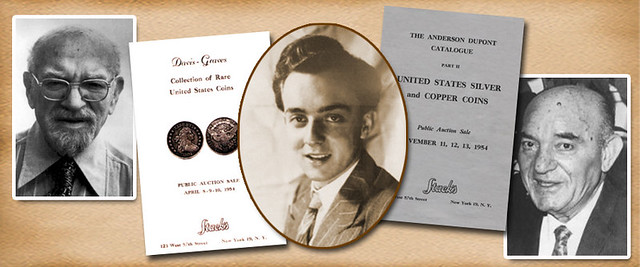
The year 1971 continued the inflation of 1970, with the value of precious metals advancing each month. The public believed that silver would continue to rise, and the search for earlier silver coins in change grew more intense. Melting of silver coins was allowed and the value of each ounce of silver advanced. Speculators and investors crowded the market and the demand was stimulated further as more people learned of the increasing value of each U.S. silver coin struck before 1965.
For gold it became necessary to first advance the value of an ounce of gold from the original value of $35. As it got to $42 at the end of 1970, President Nixon "closed the gold window," so that the Treasury could officially raise the value to $42 per ounce. With the window closed, gold was no longer sold by the United States. Gold certificates, earlier redeemable for an ounce of gold at the U.S. Assay office, were no longer exchangeable.
All these inflation-motivated actions caused a temporary halt on the dollar and its redemption. Only in special cases were foreign government obligations met with gold for notes, bonds or certificates. These actions, that made gold and silver more valuable in comparison with the dollar, slowed for a short time the drain on the United States' supply of gold.
Counterfeiters, especially those dealing with coins from outside of the United States, found it easier to make coins of a given weight with a lower gold content. These false coins continued to be a problem on the market. We never returned to having imports of gold coins limited, but at the Custom House they were examined more carefully, and the flow of counterfeits was somewhat restricted.
Educated dealers, collectors, pawn brokers and precious metal dealers formed alliances to try to deter the false coins from the market place, including through the Professional Numismatists Guild. But the precious metals market was too large for the relatively few dealers who were knowledgeable to control the problem. The Congress of the United States had meetings to investigate how to stop these counterfeits from continuously flooding the market, weakening the value of genuine pieces and causing losses and disillusionment among collectors. It took Congress, until 1973 to call a major meeting of hobbyists to testify and suggest remedies to the abuses that were plaguing all hobbies, not just numismatics. I will say more about that meeting when I get to the happenings of 1973.
To read the complete article, see:
Harvey Stack Remembers: Growing Up in a Numismatic Family, Part 56
(https://www.stacksbowers.com/News/Pages/Blogs.aspx?ArticleID=harvey-stack-remembers-56)
To read the earlier E-Sylum article, see:
HARVEY STACK'S NUMISMATIC FAMILY, PART 55 (https://www.coinbooks.org/v22/esylum_v22n42a15.html)
ANS EXEC. DIRECTOR DR. WARTENBERG STEPS DOWN
Two official press releases issued Friday announced personnel changes at the American Numismatic Society in New York. -Editor
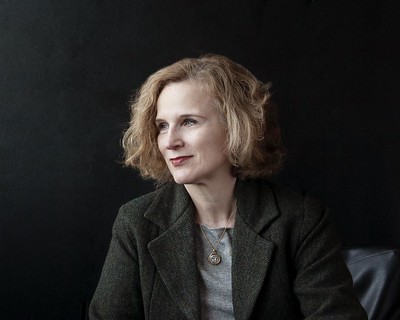 The American Numismatic Society announced this week that
its Executive Director, Dr. Ute Wartenberg, has decided to step down from her position to return to full-time research. She will remain at the Society as a full-time Research
Curator while also serving as Curator of the Amastris Collection, a private collection of Greek coins. Dr. Gilles Bransbourg, Deputy Director of the Society since January 2018,
has worked closely with Dr. Wartenberg over the last year to facilitate the transition, and he will assume the position of Executive Director beginning November 1, 2019.
The American Numismatic Society announced this week that
its Executive Director, Dr. Ute Wartenberg, has decided to step down from her position to return to full-time research. She will remain at the Society as a full-time Research
Curator while also serving as Curator of the Amastris Collection, a private collection of Greek coins. Dr. Gilles Bransbourg, Deputy Director of the Society since January 2018,
has worked closely with Dr. Wartenberg over the last year to facilitate the transition, and he will assume the position of Executive Director beginning November 1, 2019.
Prior to joining the ANS, Dr. Wartenberg had already built an academic reputation, with a focus on ancient Greek coinage. After her education in Saarbrücken, Germany, she went to Oxford University as a Rhodes Scholar and was awarded a doctorate in papyrology. Subsequently, from 1991 to 1998, she worked as Curator of Greek Coins in the British Museum in London. Her publications include over 50 books and articles on papyrology and numismatics, including Coins Hoards VIII and Coin Hoards IX (with Andrew Meadows), After Marathon: War, Society and Money in Fifth-Century Greece; and The Oxyrhynchus Papyri, Vol. LXIV. Among her many honors and academic awards are the Ehrenpreis der Gesellschaft für Internationale Geschichte and being elected a Fellow of the Society of Antiquaries.
Dr. Wartenberg assumed her leadership role in 1999, during a period of severe financial crisis for the Society. At the time, the ANS—which was founded in 1858—had purchased a building at 140 William Street, near Wall Street, where it planned to move from its nearly century-long residence in northern Manhattan. But it had to undertake a huge renovation project of its new headquarters, and simultaneously was forced to deal with an annual deficit of $1 million and the inescapable necessity of cutting its staff in half. "This was the hardest task I faced in my two decades at the Society, and it undoubtedly had a huge impact in my subsequent commitment to the staff going forward." Dr. Wartenberg said. Ultimately, the Society's Trustees sold the building, which helped put the ANS on a positive financial footing going forward, and relocated to its present home on Varick St.
During her tenure, Dr. Wartenberg carried out a rigorous program of modernization, which was based on the concept of maximizing the limited resources of the ANS to focus on a few discrete goals. "It would be an understatement to say that these early years as director were straightforward," Dr. Wartenberg said, "but I benefited enormously from the advice and friendship I received from ANS Presidents Donald Partrick, Roger Siboni and more recently Sydney Martin."
Among many efforts to secure the Society's future, Dr. Wartenberg engaged in extensive fundraising from members outside New York City. She also developed partnerships with other institutions, such as the Federal Reserve Bank of New York, which provided its magnificent ground-floor space for a museum. In 2001, Alan Greenspan opened "Drachmas, Doubloons and Dollars. A History of Money." The exhibit highlighted many of the ANS's treasures and was viewed by more than 400,000 visitors over a decade.
Over the past 20 years, Dr. Wartenberg steadily built the ANS into an institution of both national and international renown, and she leaves her post with the Society in a far more secure position. Today, the endowment is at approximately $43 million. Since 1999, over 45,000 coins and other objects have been donated to the Society's collection, including the Julius Korein Collection of Gobrecht Dollars, the Abe and Marian Scheuer Sofaer collections, and the Richard B. Witschonke Collection of provincial coins of the Roman Republic. In 2018 Dr. Wartenberg was able to purchase for the Society in a bankruptcy court the archives of dies, medals, and die-shells of the Medallic Art Company and thus save this invaluable treasure for the nation and for future scholarship.
One of her most impactful legacies will no doubt be the strong digital presence of the ANS in the numismatic world. Thanks to the visionary efforts of former ANS President Harry W. Bass, Jr., the Society's internet identity and its collection databases were already in place when Dr. Wartenberg took over in 1999, but she championed this program by adding staff and funding, and in recent years has directed an ever increasing share of the Society's resources to online activities. Now, more than 500,000 coins, some 80,000 books and pamphlets, and 450 archival collection records are available online. The Society also supports collaborative efforts with other major coin cabinets in order to create Linked Open Data (LOD) for use in databases of numismatic material, which were largely funded by grants from the National Endowment for the Humanities. Additionally, the Society has revived its numismatic publishing department, which is again one of the significant publishers of serious numismatic research in print and digital formats.
Dr. Wartenberg served on many committees during her term, including as first Chairperson of the Citizen Coinage Advisory Committee, and she continues her roles as a member of the International Numismatic Council and of the Anti-Counterfeiting Educational Foundation, Inc. She was also recently appointed Chairperson of the International Committee for Money and Banking Museums.
"Through Dr. Wartenberg's leadership, the ANS has been transformed from a financially precarious institute to a healthy one with an international reputation as among the finest numismatic institutions of its kind in the world," notes Kenneth L. Edlow, Chairman of the Board of Trustees. "It boasts a magnificent and world-renowned collection, significant scholarship and research, a thriving publications department, and expanding digital presence, all supported by a healthy endowment. Dr. Wartenberg's own rigorous scholarship and her incredible charisma have transformed the organization into the flourishing institution that we are proud to be a part of today." "It's been a real joy to work alongside Dr. Wartenberg for nearly two decades," said Chief Curator Dr. Peter van Alfen, "and to see the ANS's astounding transformation take place under her watch. Not least among her achievements has been building a team that works very hard but has wonderful esprit de corps, certainly a reflection of her diligence and charm."
Ute has been Executive Director at ANS for almost as long as I've been active in it. I've greatly enjoyed all of my visits and interactions from the Galas to Conferences to working meetings regarding digitization and the Newman Numismatic Portal. The ANS has been a clear leader in the digital numismatics realm, and based on the amazing results to date I'm certain that will continue. We'll miss having Ute's steady hand at the helm, but we can look forward to interacting with her in her new roles. Good luck! -Editor
To read the complete article, see:
Dr. Wartenberg Steps Down as Executive Director (http://numismatics.org/pr-uwk-retirement/)
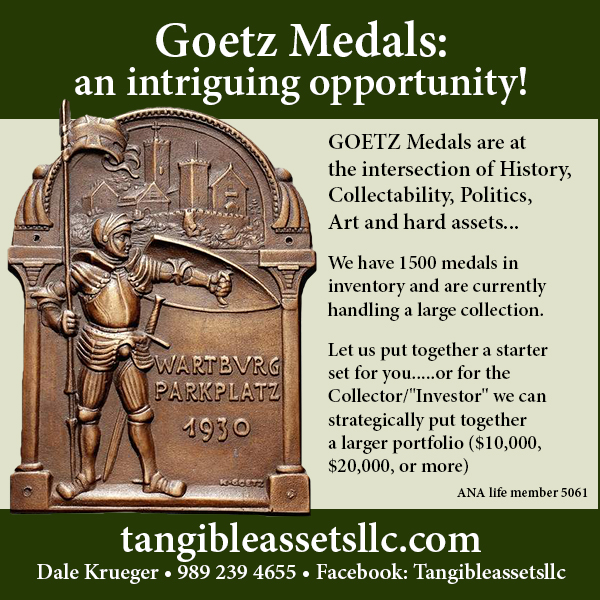
DR. GILLES BRANSBOURG NAMED ANS EXEC. DIRECTOR
The new ANS Executive Director is Dr. Gilles Bransbourg, who many readers may have met at ANS events or as he manned the ANS table at coin shows. -Editor
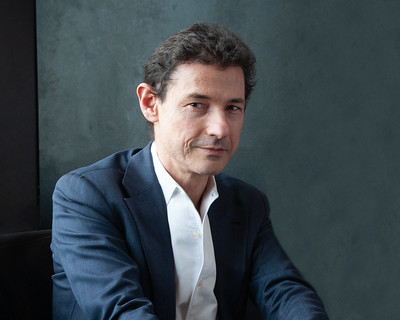 The American Numismatic Society (ANS) is pleased to
announce that Dr. Gilles Bransbourg has been named Executive Director. He replaces Dr. Ute Wartenberg, who is stepping down as Executive Director after two decades leading the
Society; she will remain at the ANS in the new position of Research Curator. "I am very pleased to hand over the reigns to Gilles, whose experience in academia and the financial
world is perfect for an institution such as the ANS," Dr. Wartenberg said.
The American Numismatic Society (ANS) is pleased to
announce that Dr. Gilles Bransbourg has been named Executive Director. He replaces Dr. Ute Wartenberg, who is stepping down as Executive Director after two decades leading the
Society; she will remain at the ANS in the new position of Research Curator. "I am very pleased to hand over the reigns to Gilles, whose experience in academia and the financial
world is perfect for an institution such as the ANS," Dr. Wartenberg said.
Dr. Bransbourg joined the Society in 2011 as an Adjunct Curator, then served as Associate Curator before assuming the role of Deputy Director in 2018. Among his many other contributions to the Society during that period, he supervised the NEH-funded Online Coins of the Roman Empire (OCRE) project and curated the exhibition "Signs of Inflation," at The Federal Reserve Bank of New York.
Prior to joining the ANS, in 2009, Dr. Bransbourg was a Visiting Research Scholar at New York University's Institute for the Study of the Ancient World, where he retains a Research Associate affiliation.
In 1982, at the age of 17, Dr. Bransbourg won the French Concours Général award in History. He then went on to study Economics, Mathematics and Statistics in Paris at Lycée Louis-Le-Grand, École Polytechnique, Sciences Po and École Nationale de la Statistique et de l'Administration Économique. Subsequently he became a market economist, then specializing in financial derivatives, and held executive roles in the banking sector in Paris, Riyadh and London. He stepped down from his last position in 2005, in order to engage fully with his lifelong passion, history. By 2010, he had completed a Ph.D. in History at École des Hautes Études en Sciences Sociales in Paris.
Dr. Bransbourg's research deals with comparative economic and monetary history. He has published extensively in a range of academic journals, conference proceedings, and books, and he provided chapters or sections to "La Politique Monétaire de l'Euro" (2009), "Fiscal Regimes and the Political Economy of Premodern States" (2015), "Le Gouvernement des Citoyens" (2017), and "Debasement: Manipulation of Coin Standards in Pre-Modern Monetary Systems" (2020). Among numerous contributions to economic history, he has published "Rome and the Economic Integration of Empire" as ISAW Papers 3 (2012), "Capital in the Sixth Century: the Dynamic of Tax and Estate in Egypt" in Journal of Late Antiquity (2016), which addresses the question of fiscal fairness across the social spectrum in Late Antiquity, and coauthored with Roger Bagnall, as ISAW Papers 14 (2019), "The Constantian Monetary Revolution."
In addition, he is a frequent guest speaker in academic colloquiums and venues. Dr. Bransbourg lectured in Economics at Sciences Po between 1990 and 1994, at the Executive Master of Finance of Sciences Po between 2007 and 2015, at New York University in 2016, and has been offering a graduate seminar at ISAW since 2018.
Dr. Bransbourg was made a knight in the French Order of the Ordre des Palmes Académiques in 2014. As a financial consultant and as one committed to philanthropic endeavors, he serves on several boards and financial committees and advises or helps a range of institutions, foundations, and corporations in Europe and the US. He has contributed to the establishment of an English-French dual language curriculum in New York public schools.
"I am honored that the Board of Trustees has given me this opportunity to continue the work of Dr. Wartenberg, secure the financial well-being of the Society, and seek ways to expand its role further. I am also most grateful to Ute, who has provided continuous mentoring and support during this transition period," Dr. Bransbourg said. "I relish as well the challenge of enhancing the leadership role the ANS has assumed in the numismatic world and ensuring that it remains a vital institution for future generations of professional and amateur enthusiasts. At the same time, the ANS' ability to associate numismatics more closely with economic, cultural, and art history offers exciting prospects." ANS President, Sydney Martin, stated that the Board had voted unanimously to appoint Dr. Bransbourg. "We are so pleased to have found such an accomplished and talented individual as Gilles Bransbourg to lead the Society."
Welcome to the new role! We'll all look forward to the next chapter in the history and evolution of the American Numismatic Society. -Editor
To read the complete article, see:
Dr. Gilles Bransbourg named ANS Executive Director (http://numismatics.org/pr-gb-newed/)
DR. JESSE KRAFT, ANS CURATOR FOR THE AMERICAS
In other ANS news, a new Assistant Curator for the Americas is on board. -Editor
The American Numismatic Society is pleased to announce that Dr. Jesse Kraft has been hired as Assistant Curator of the Coins and Currency of the Americas.
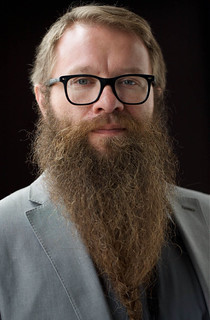 Dr. Kraft finished his PhD in American Studies
at the University of Delaware earlier this year where he wrote a dissertation entitled "The Circulation of Foreign Coinage: An American Response, ca. 1750–1857," and where
obtained a certificate in Museum Studies. In his earlier studies at The Richard Stockton College of New Jersey, he wrote an MA thesis on the circulation of Spanish-American silver
in Scotland, and a BA thesis on the transition from the large to small US cent in 1840–1857.
Dr. Kraft finished his PhD in American Studies
at the University of Delaware earlier this year where he wrote a dissertation entitled "The Circulation of Foreign Coinage: An American Response, ca. 1750–1857," and where
obtained a certificate in Museum Studies. In his earlier studies at The Richard Stockton College of New Jersey, he wrote an MA thesis on the circulation of Spanish-American silver
in Scotland, and a BA thesis on the transition from the large to small US cent in 1840–1857.
While completing his graduate studies, Dr. Kraft worked at the Winterthur Museum, Garden, and Library in Winterthur, Delaware as a Curatorial Assistant and Storage Project Manager. In addition, he completed internships at the Delaware Historical Society and at the ANS, where in 2017 he was also a student in the in the Eric P. Newman Graduate Summer Seminar in Numismatics. "We are thrilled that Dr. Kraft accepted our offer after a rather long and competitive search process," said Executive Director Ute Wartenberg, "he comes to us with an intimate knowledge already of the Society and a good knowledge of museum work. We very much look forward to having him join our curatorial team."
Welcome! Great thesis topics; these are subjects I've thought and read about often. I'll look forward to meeting Dr. Kraft at a future event. -Editor
To read the complete article, see:
The ANS welcomes a new Assistant Curator (http://numismatics.org/pr-kraft/)

2019 U.S. MINT NUMISMATIC FORUM HELD
Pat Heller attended the recent fourth U.S. Mint Numismatic Forum in Philadelphia and published a report in a Numismatic News article. Here's a short excerpt - see the complete article online. -Editor
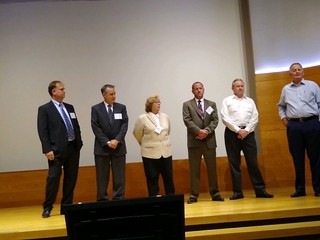 U.S. Mint Director David Ryder welcomed the audience, then promptly gave a future outlook for planned issues. Among
the plans (some of which would require legislation in order to occur) are:
U.S. Mint Director David Ryder welcomed the audience, then promptly gave a future outlook for planned issues. Among
the plans (some of which would require legislation in order to occur) are:
- In 2020, the Mint is planning to offer a coin and medal set honoring the 400th Anniversary of the Mayflower landing, a product to be issued in conjunction with the British Royal Mint.
- In 2021 there will be new designs for Gold and Silver Eagle coinage to incorporate more anti-counterfeiting features.
- A second round of America The Beautiful Quarters is not planned, even though the original legislation for the series authorized a second set of issues.
- Instead, from 2022-2025 the Mint would like to issue a 20-coin series of quarters featuring American animals
- Also from 2022-2025, the Mint would like to issue half dollars featuring endangered species.
- In 2026, the intention would be to issue one-year circulating commemoratives of the cent through $1.00 coins to honor the 250th Anniversary of American Independence, an idea similar to the Bicentennial quarters, halves, and dollars that came out for 1976.
- Beginning in 2027, the Mint hopes to issue a 20-quarter series over four years depicting sports popular with youth. The Mint would poll children and numismatists to identify which 20 sports would be depicted. These coins would have some ties with the 2028 Summer Olympics that will be held in Los Angeles, California. In addition, there would be half dollars issued for the Paralympics happening at the same time.
- Discussions are taking place at the Bureau of Engraving and Printing to change the reverse of the $2.00 Federal Reserve Note for 2026.
After Ryder's introduction, attendees walked over to the Philadelphia Mint a short distance away to meet new Superintendent Rob Kurzyna and Chief Engraver Joe Menna. After a presentation on the U.S. Mint's history, we were given a tour right on the production floor, an opportunity not extended to the general public.
To read the complete article, see:
A Modest Proposal for the U.S. Mint
(https://www.numismaticnews.net/article/a-modest-proposal-for-the-u-s-mint)
THE FUTURE OF COIN CONVENTIONS
Jeff Garrett published a great piece on his NGC blog about the future of coin conventions. Here's an excerpt - see the complete article online. The image is of a Florida United Numismatists (F.U.N.) show opening. -Editor
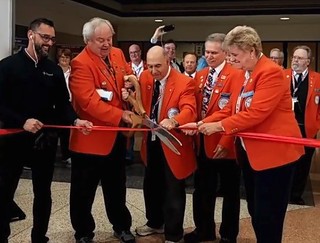 Because of all the planning and organization,
the ANA is fortunate that its summer convention is usually a roaring success. Unfortunately, some rare coin conventions around the country are not so lucky. In recent years,
several major shows have seen significant declines in attendance and the number of tables sold.
Because of all the planning and organization,
the ANA is fortunate that its summer convention is usually a roaring success. Unfortunately, some rare coin conventions around the country are not so lucky. In recent years,
several major shows have seen significant declines in attendance and the number of tables sold.
A case in point would be the annual convention held by the Central States Numismatic Society (CSNS) each spring in the Midwest. Twenty years ago, the CSNS show was considered one of the largest in the nation and a "must attend" event. The large bourse area sometimes exceeded 400 tables! But last year, the show sold closer to 250 tables, and other shows around the country have experienced similar declines.
Saturation leading to less successful shows?
The reasons some coin shows are succeeding while others are faltering can be complicated. A case can be made that there are simply too many coin shows these days. Each week, there
are literally a dozen or more shows around the country. Some are local, one-day events, but there are also plenty of major regional and national shows on the calendar every
month.
The World Money Fair in Berlin that is held in February is massive. The attendance is understandable given that there are very few coin shows in Europe each year. If there were only a handful of coin shows in the United States each year, the attendance at each event would be huge. Perhaps in the future, the European model of fewer shows will become the norm in the United States.
Many believe the internet has been a game changer for rare coin conventions. The theory is that collectors don't need to attend a coin show when coins can so easily be found on the web. There is much truth to the fact that at any time of the day or night, you can shop for rare coins around the country. So, why go to a coin show when so much is available at the push of a button?
I actually believe the opposite is true about the internet's impact on coin shows. The internet has created millions of new coin collectors. These collectors may start on the web, but soon find the idea of attending an actual coin show more exciting.
My analogy for this effect is the spread of legalized gambling in the United States. Many predicted that a casino in every large city would destroy the gaming industry in Las Vegas. However, the opposite proved true as local casinos introduced millions to the excitement of casino gambling, causing these folks to want to experience the "big time"—a trip to Las Vegas! I hope that is how many new collectors feel about going to an ANA convention.
The reorganization of the airline industry has also had a major impact on some coin shows. Many smaller-market cities have seen serious cutbacks in air service. This means fewer and more expensive flights on smaller airplanes. Coin dealers do not travel light, and most hate going to a show if it means a commuter flight. This was one of the prime reasons the ANA decided against holding its annual convention in Indianapolis several years ago.
It is also undeniable that many of the most active dealers are entering the sunset of their careers, and flying becomes more difficult as you age. I personally struggle much more with heavy cases these days than when in my prime. The enhanced security checks in the last decade have also become a burden.
Nothing beats the real thing
Despite all these headwinds, most coin shows are generally in good health. If a coin show is run well, the public and collectors will attend. In fact, anytime I get concerned
about the health of the market, I look around at the thousands of collectors at a typical coin show and feel better. Like me, most collectors love the excitement of going to a
show and actually seeing and holding the coins they collect.
After all, where else can you go and hold museum-quality objects in your hands? Photographs on the Internet have improved a great deal over the years but nothing beats seeing coins in person. Coin shows also present an incredible educational opportunity for collectors. You can see a vast array of rare coins on display, look at educational exhibits and perhaps attend an informative seminar.
I agree with Jeff on all counts. Long live the coin show! But clubs and promoters can't just sit on their hands and hope for the best. Promote, promote, promote, online and off. And above all, make your show an interesting and rewarding experience to encourage repeat attendance. What do readers think - what are some of your more memorable recent coin show experiences? -Editor
To read the complete article, see:
Jeff Garrett: The Future of Coin Conventions (https://www.ngccoin.com/news/article/7843/)
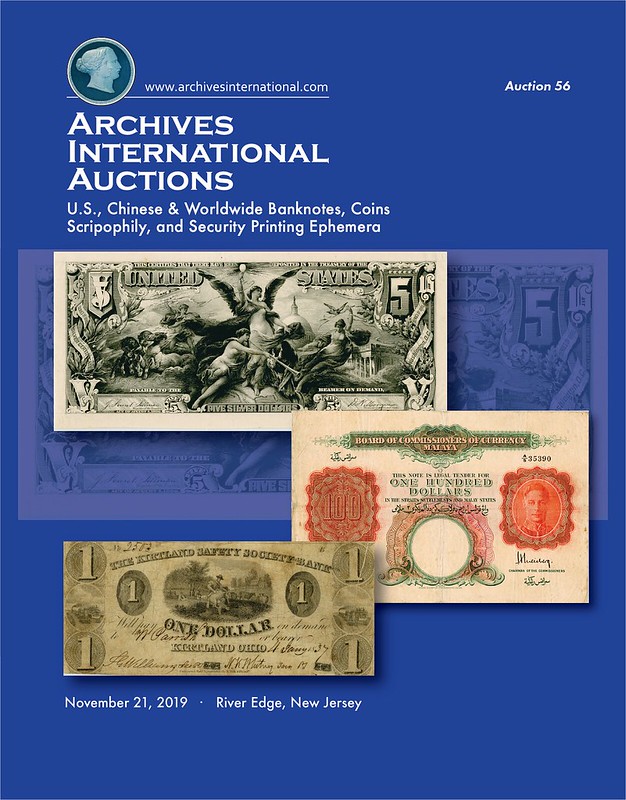
THE JOHN W. ADAMS COMITIA AMERICANA COLLECTION
Last week we highlighted a few of the historic medals from the upcoming Stack's Bowers sale of the John W. Adams Collection of Comitia Americana and Related Medals. With permission, we are republishing here the catalog text preceding the lots with background on Adams and his comments on the collection, and cataloguer John Kraljevich's Introduction. Thanks to Christine Karstedt of Stack's Bowers for passing the text along. -Editor
John W. Adams
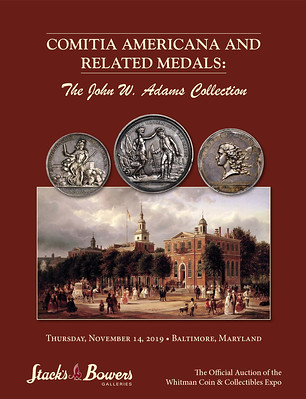 John W. Adams was born on April 2, 1936, the
son of Weston Adams and Mildred Boyd Adams. His father was a stock broker and also president of the Boston Bruins hockey team. His mother was an ardent Republican and a
spectacular mother. His older sister, Abigail, became a well-known cancer doctor at Bryn Mawr Hospital. John attended the Haverford School, graduating in 1953. He furthered his
education, graduating from Princeton University in 1957 and the Harvard Business School in 1960. His professional career was largely in investment banking, founding Adams,
Harkness & Hill in 1966. He retired in 2006.
John W. Adams was born on April 2, 1936, the
son of Weston Adams and Mildred Boyd Adams. His father was a stock broker and also president of the Boston Bruins hockey team. His mother was an ardent Republican and a
spectacular mother. His older sister, Abigail, became a well-known cancer doctor at Bryn Mawr Hospital. John attended the Haverford School, graduating in 1953. He furthered his
education, graduating from Princeton University in 1957 and the Harvard Business School in 1960. His professional career was largely in investment banking, founding Adams,
Harkness & Hill in 1966. He retired in 2006.
For nearly 40 years John was married to Mary Pierce Adams, with whom he had three fabulous children: Nicholas, John Jr. (deceased), and Alexandra. In 2000, two years after his first wife's death, he married Regina Fromhagen Adams, with whom he has enjoyed nearly 20 very happy years.
His collecting career began early and over the years he assembled several notable collections. In 1982, Bowers and Ruddy offered his incredible collection of 1794 large cent varieties in a special "fixed-price" catalog. John had a great interest in medals, including Indian Peace medals (offered in Stack's 2009 Americana sale) and Betts medals (featured by Stack's Bowers Galleries in November 2015). As a proud and staunch patriot, John considers the Comitia Americana medals presented in the current catalog to be his crowning numismatic achievement.
Some Words from John W. Adams
On Comitia Americana Medals
Most coins and medals are owned by the collector. Comitia Americana medals invert this relationship: they own the collector.
An individual who picks up a Comitia Americana medal must be captivated by it, as he or she is automatically drawn into a compelling story. These were our nation's first Medals of Honor. All eleven recipients made pivotal contributions to the winning of our independence. All eleven made extreme sacrifices for a compelling cause.
Anyone holding one of these objects must be aware of the thousands of patriots who, in 1776, streamed to Boston to join the battle. They must be aware of the sheer bravado entailed in the attack on Stony Point. They must be uplifted by the words: "I have not yet begun to fight."
Today, what we hope to become as a nation may not be as clear as it was then. Nor are our hopes as widely shared. Simply stated, Comitia Americana medals explain to us what we may yet be and urge us forward.
A Collector's Perspective on "Raw" Medals 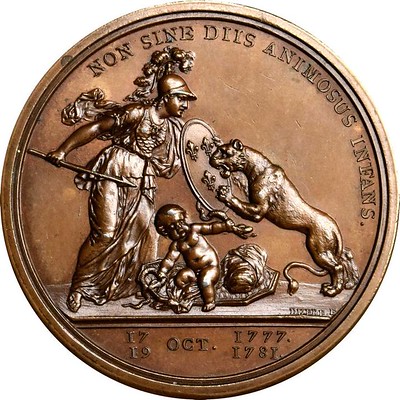
One of the first things that readers of this catalog will notice is that the medals are being offered "in the raw" – i.e. not encapsulated in plastic. There are multiple reasons
for this. First, edges, the so-called "third side" of a medal, can be the most important side. The edges of Comitia Americana medals tell the observer not only how the piece was
made, but possibly also by whom it was made as well as when and where. Prospective buyers may need to educate themselves on how these clues can be deciphered, but the clues are
there for those who wish to interpret them. Second, the Comitia Americana's are, above all, historical medals – they commemorate important people and events. By holding the raw
medal in the palm of the hand, it is possible to envision the past and even connect with it. This cannot be done easily, if it all, when holding a piece of plastic. Finally, these
medals are works of art and, as with any work of art, their many aesthetic dimensions can be fully appreciated only by direct observation.
Encapsulation in plastic is a perfectly satisfactory method of storage. However, over the many years we have owned them, we have wrapped these medals in tarnish-proof tissue paper, then placed them in an inert manila envelope. This has provided safe storage and the manila envelope has served to carry all manner of relevant information. In addition to protecting against the elements, the tissue paper serves as a buffer if the medal happens to slip out of its container.
How does one learn about Comitia Americana medals? A good place to begin is the book, Comitia Americana and Related Medals, by this writer and Anne Bentley. There are numerous other written sources, plus there are the human oracles – people like John Kraljevitch, Neil Musante, Tony Terranova, John Sallay and, of course, Anne Bentley. All are eminently approachable and teeming with answers.
Introduction
by John Kraljevich
The history of the Comitia Americana medal series is not one history, but three. Those three histories, taken together, tell two formative stories: the birth of our nation and the
birth of our nation's love affair with numismatics.
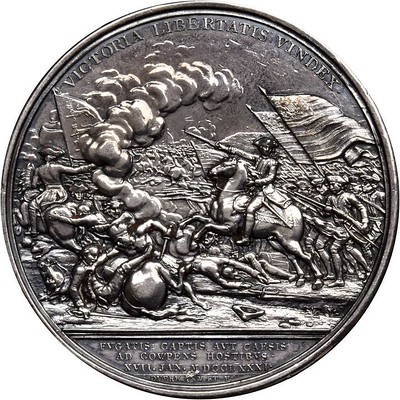 The first story is
military, a narrative of triumphs big (Saratoga) and small (Eutaw Springs). It is a campfire tale of an overmatched army picking spots to inflict world-changing damage upon a
superpower, on fields from upstate New York to the South Carolina lowcountry. Every military story has two sides, that of the soldiers who sacrificed for their achievements and
that of the politicians who attempted to capitalize upon them. The Comitia Americana medals feature both, with you-are-there depictions of military victories authorized by the
Continental Congress in the majestic afterglow of conquest, conceived to both recognize battlefield heroics and to fight a propaganda war highlighting American successes that
proved all too rare over the duration of the war. The stories of these medals begin at the moment a sword leaves a British hand to be delivered in defeat into an American one.
They describe, idealize, and announce battlefield wins. They anoint heroes, hand-picked by the desk jockeys in the Continental Congress. They not only recognize a historic moment,
but choose what history is told.
The first story is
military, a narrative of triumphs big (Saratoga) and small (Eutaw Springs). It is a campfire tale of an overmatched army picking spots to inflict world-changing damage upon a
superpower, on fields from upstate New York to the South Carolina lowcountry. Every military story has two sides, that of the soldiers who sacrificed for their achievements and
that of the politicians who attempted to capitalize upon them. The Comitia Americana medals feature both, with you-are-there depictions of military victories authorized by the
Continental Congress in the majestic afterglow of conquest, conceived to both recognize battlefield heroics and to fight a propaganda war highlighting American successes that
proved all too rare over the duration of the war. The stories of these medals begin at the moment a sword leaves a British hand to be delivered in defeat into an American one.
They describe, idealize, and announce battlefield wins. They anoint heroes, hand-picked by the desk jockeys in the Continental Congress. They not only recognize a historic moment,
but choose what history is told.
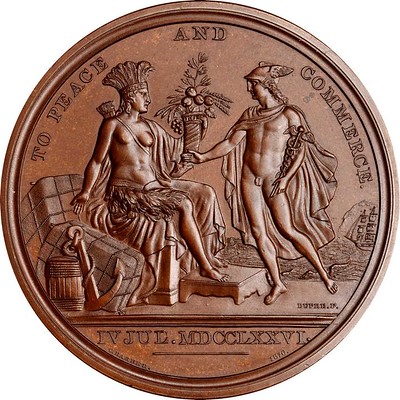 The second story is
diplomatic and follows the Revolutionary War. Its characters are not the Continental Congress, pounding on desks in Philadelphia or Baltimore, but Americans abroad: Thomas
Jefferson, Benjamin Franklin, and the less heralded David Humphreys. The co-stars are French engravers like Dupré, Duvivier, and Gatteaux. This is the story of a new and nearly
bankrupt nation asserting itself on the world stage, seeking to present a national identity in the royal courts of Europe, and attempting to create objects of enduring artistic
value. This is the story of the Comitia Americana medals' execution, which followed their conception by more than a decade in some cases.
The second story is
diplomatic and follows the Revolutionary War. Its characters are not the Continental Congress, pounding on desks in Philadelphia or Baltimore, but Americans abroad: Thomas
Jefferson, Benjamin Franklin, and the less heralded David Humphreys. The co-stars are French engravers like Dupré, Duvivier, and Gatteaux. This is the story of a new and nearly
bankrupt nation asserting itself on the world stage, seeking to present a national identity in the royal courts of Europe, and attempting to create objects of enduring artistic
value. This is the story of the Comitia Americana medals' execution, which followed their conception by more than a decade in some cases.
The last of these stories bridges the gap from the useful lives of these objects — as performative largesse to Americans and Europeans alike — to collectibles. This story is as complex as the movement of militia troops through the backcountry, fraught with restrikes from original dies made in Paris, productions from the Philadelphia Mint from dies old and new, and scholarship whose veracity has rarely matched its enthusiasm. This story extends from James Mease's first description of these medals in 1821 to the modern day state of the art, encapsulated in the work Comitia Americana by Anne Bentley and John W. Adams.
This catalog will not be the final say, but it is the final word on this collection. John W. Adams began assembling the medals of the Comitia Americana some four decades ago. His cabinet has been a numismatic estuary, both taking in nutrients to nourish future generations and letting go enough to let the current generation thrive. This assemblage not only inspired his masterwork, but also an endless array of talks, essays, articles, and published musings on the topic. Long-underappreciated, these medals found a welcome home with John, like so many abandoned puppies who were too cute to leave behind. As such, a novice might see it as rife with duplication, a testament that these astounding rarities are somehow more numerous than collectors think. The opposite is true. Each of these is unique in some way: die state, composition, metrology, or provenance. With John's capacious resources of both time and money, these were all the medals he was able to acquire. This is both a completist's passion and a scholar's study collection. Were any of these medals not present, his research would have been less fruitful. They represent more than 40 years of dutiful acquisitions, and in more than one case represent the entire collectible population of a particular type.
The medals are now free to find new homes, with collectors who seek to capture a piece of history, or those whose scholarly curiosity has carved a niche in their cabinet that only an Adams medal can fill. Some of these medals are cognates of those in other collections, near duplicates of similar pieces that have sold in recent years. They will be easy to evaluate and compare to known populations. Others are nearly or entirely unique. They may have been acquired privately or in a great auction of the past. They will herein be described with suitable fanfare, but the ultimate evaluation will be left to the bidder: How do you price something whose place in American history is literally induplicable? How do you weigh the opportunity versus the cost, when the choice is acquiring the Adams specimen or a collection forever going without?
This offering is historic, in every meaning of that sometimes tortured word. This catalog, we hope, is equal to the occasion. It would not exist without John Adams' scholarship, foresight, or decades of mentorship to its author and countless others. We're grateful for his friendship and for this opportunity.
I had been in the employ of our predecessor firm, Bowers and Merena, for all of a few weeks in 2000 when Q. David Bowers came to my desk, asked me if I knew anything about Betts medals, and invited me into our Wolfeboro conference room to meet a kind gentleman named Lucien LaRiviere. While early American medals had been a long-term interest even before that, fostered by the friendship of Mr. Adams, Richard Margolis, Tony Terranova, and others – pulling open the drawers of LaRiviere's fully-laden medal cabinet revealed a brand new world to me. Michael Hodder once told me that John Ford called to correct the mistakes in my medal descriptions because he thought I was worth correcting. I've learned a lot in the last 20 years, but still have much to learn. The errors and opinions in the catalog that follows are based upon my experiences and are, thus, entirely my own.
John Kraljevich
Fort Mill, South Carolina
Summer 2019
To read the earlier E-Sylum article, see:
JOHN W. ADAMS COMITIA AMERICANA MEDALS (https://www.coinbooks.org/v22/esylum_v22n43a18.html)

ARCHIVES INTERNATIONAL SALE 56 ANNOUNCED
Here is the announcement for the November 21, 2019 sale by Archives International. Check the online listings carefully - there are quite a number of super items here. -Editor
U.S., CHINESE & WORLDWIDE BANKNOTES, COINS, SCRIPOPHILY AND SECURITY PRINTING EPHEMERA TO BE OFFERED AT PUBLIC AUCTION ON THURSDAY, NOVEMBER 21, 2019
The auction will be held by Archives International Auctions at their new offices in River Edge, N.J.
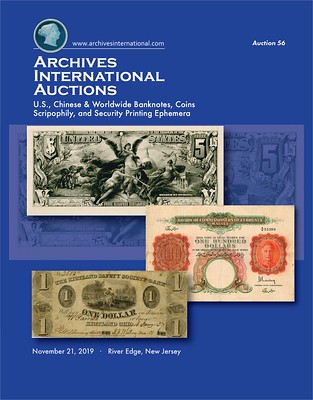 The November 21st, 2019 auction
by Archives International Auctions will consist of 1040 different lots offered in three sessions beginning with 447 lots of Chinese and Worldwide Banknotes, Coins and Russian
Scripophily. The second session features U.S. & World Scripophily with 341 lots including Part 2 of an outstanding collection of CSX predecessor railroads with many rarities
never seen previously by the collecting community. The third session features 250 lots of U.S. Obsolete Banknotes highlighted by Part 2 of the Highlands Collection of New Jersey
Obsolete Bank and Scrip notes, U.S. National Banknotes, Large and Small Type Notes and Security Printing Ephemera.
The November 21st, 2019 auction
by Archives International Auctions will consist of 1040 different lots offered in three sessions beginning with 447 lots of Chinese and Worldwide Banknotes, Coins and Russian
Scripophily. The second session features U.S. & World Scripophily with 341 lots including Part 2 of an outstanding collection of CSX predecessor railroads with many rarities
never seen previously by the collecting community. The third session features 250 lots of U.S. Obsolete Banknotes highlighted by Part 2 of the Highlands Collection of New Jersey
Obsolete Bank and Scrip notes, U.S. National Banknotes, Large and Small Type Notes and Security Printing Ephemera.
"Part 1 of the Highlands Collection of New Jersey Obsolete Scrip and Banknotes was a resounding success with 100% of the 157 lots selling, many over the high estimates. We expect a similar response for Part 2 offered in our upcoming auction", stated Dr. Robert Schwartz, President of Archives International Auctions. "Our current 56th auction will offer 1040 lots of rare and desirable U.S. & Worldwide Banknotes, Coins, Scripophily and Security Printing Ephemera with many rare and desirable items seldom offered at auction including items for the beginner to the advanced collector".
Included in the sale are consignments from numerous estates and longtime collections with many items having never been offered previously at auction. China features over 110 notes with a number of highlights including a China, Ta Ch'ing Government Bank , Shansi Issue, a 1911 Unlisted 2 Taels Denomination Rarity; a Bank of Territorial Development, 1915 Issue $5, Urga Issue Banknote, high grade banknote; a desirable and high grade Provincial Bank of Three Eastern Provinces, 1929 Issue 100 Yuan Specimen Banknote that is extremely rare and that is sure to attract attention as well as numerous issued and specimen Chinese banknotes; Chinese scripophily is featured by a Chinese Government 5% Gold Loan of 1912 , I/U £500 Bond rarity as well as 18 additional scripophily items to be offered; A new estate find of 33 Chinese Silver coins dating 1890 to 1930 will be offered from a Vietnam war navy veteran who was stationed overseas and obtained the coins in numismatic searchers overseas including a number of desirable coins with none ever being offered previously at auction.
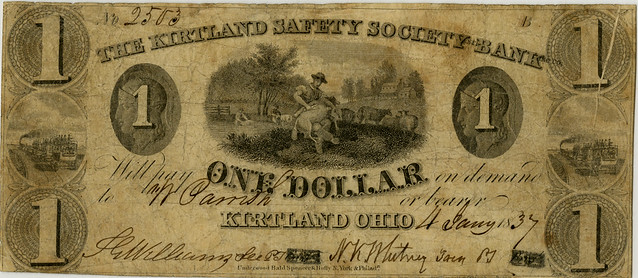
Lot 836: 1837 Kirtland Safety Society Note
A rarely seen group of British Armed Forces Special Vouchers, 1946 ND 1st Series Specimen Quartet is offered; India is represented by a number of attractive and rare notes including a Government of India, ND (1928-1935) Issue 10 Rupee Banknote; Israel is represented by a high grade set of 1955 / 5715 specimen issues; Malaya is highlighted by a 1942 Board of Commissioners of Currency, $100, P-15 banknote rarity; and Mexico includes 16 different issued, proof and specimen notes highlighted by a Banco Nacional Mexicano, ND (1882) 500 Pesos Face and Back Proof Pair. Hundreds of additional desirable notes are included that should appeal to every level of collector and dealer.
Session 2 features 341 lots of U.S. & World Scripophily, featuring Part 2 of the Stephen Beck Collection of CSX and Predecessor Railroad Bonds and Shares. Some of the many highlights include a 1910, Thomas Edison Signed Edison Storage Battery Co ., Stock Certificate; A Manson Bicycle Co ., 1905 I/U Stock Certificate - Possibly the Earliest Motor cycle stock certificate issued; a 1996, Berkshire Hathaway Inc., Class B Specimen Stock Certificate; an Amazon.Com, Inc., 2001 Specimen Stock Certificate rarity; a new estate find of 16 Pennsylvania and New York 1860's oil stock certificates; an exceptional assortment of Florida railroad bonds and shares from the CSX Collection with many examples new to the collecting community and literally hundreds of exceptional stocks and bonds from railroads, automobiles and technology to Government, Foreign, mining and dozens of additional topics.
Session 3 includes over 240 lots beginning with 29 lots of Security Printing Ephemera featuring Security Printer Ad notes, stock certificates, vignettes, vignette sheets and miscellaneous items including a unique Excelsior Bank Note company multicolor vignette sheet from the Walter Allan collection as well numerous items from the John Herzog collection that rarely are offered at auction; There are 66 lots of U.S. Obsolete, Confederate, National Banknotes and Large Type notes are highlighted by a pair of Educational $5 1895 & 1896 Series Essay Face Progress Proof Rarities from the Harry Bass Collection as well as Historic Ephemera. Other National Banknote highlights include a desirable and very rare Elko, NV., First National Bank of Elko, $20 1902 PB , Ch.# 7743 that is rarely offered at auction; 2 different 1929 $5, Serial #1 notes, one from Clinton, Connecticut and the second from Buffalo, NY are offered as well as a Gem Napa, CA., First National Bank, $20 1929 Ty 1, Ch.# 7176; Another exciting lot is a local, New Jersey Hackensack National Bank. $10, 1882 Brown Back Ch#5921 E, National Bank Note with only 2 Brown backs known on the bank.
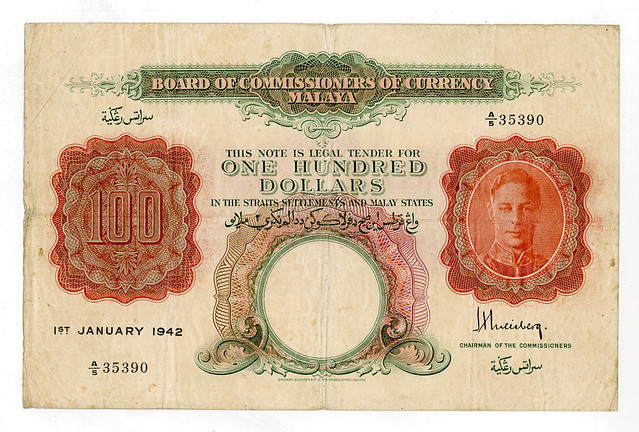
Lot 332: 1942 Malaya One Hundred Dollars
The sale ends with 153 lots from Part 2 of the Highland Collection of New Jersey Additional States Obsolete Scrip notes and Banknotes with many lots including multiple items that deserve further research that we are sure will offer many surprises for the serious collector and student of New Jersey numismatic history. A few of the many highlights from Part 2 of the Highland Collection include a Mankato City, MN. $1 , Haxby MN- 75-G2A, Merchants Bank 1854 Obsolete Banknote; a desirable Princeton, Mississippi, Lake Washington & Deer Creek Rail Road & Banking Co 1838 Obsolete Banknote; and a Tom's River, NJ. Metropolitan Market-William Bennett , 1862 Obsolete Scrip Note. Dozens of lots include multiple items, many featuring similar design notes used by various banks around the country. Session 3 also includes numerous desirable and rare items that will be of interest to the discriminating collector.
Previews will be held at Archives International Auctions offices beginning Monday, November 18th to Wednesday, November 20th between 10 AM and 5 PM and by appointment. For an appointment call 201-944-4806 or email info@archivesinternational.com .
The online catalog for the November 21 st sale is on Archives International Auctions' website and can be viewed via the Archives International live bidding platform. It can also be viewed as a Virtual Catalog or downloadable Sale 56 .pdf on their website. To pre-register for live internet bidding, log on to the Archives International Auctions website, at www.ArchivesInternational.com .
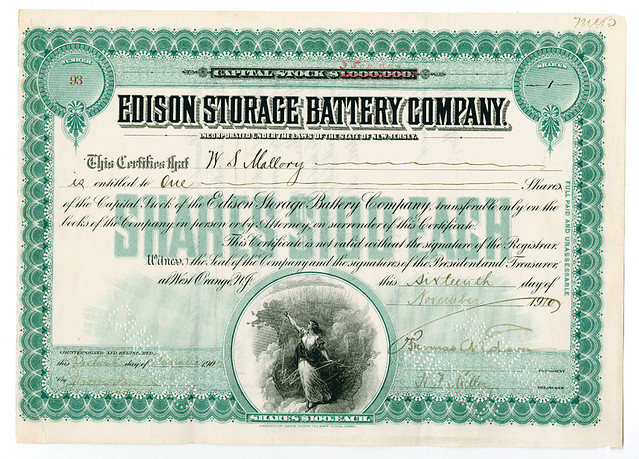
Lot 450: Signed Edison Storage Battery Certificate
Archives International is now working on their Early Winter and Spring 2020 auctions and are seeking quality consignments for future auctions or outright purchase including U.S. and worldwide banknotes, coins, stocks, bonds, stamps, postal history, historic ephemera, and autographs. To sell or consign one piece or an entire collection, please call AIA at (201) 944-4800; or e-mail them at info@archivesinternational.com .
You may also write to Archives International Auctions, at 1060 Main Street, River Edge, NJ 07661, U.S.A. To learn more about Archives International Auctions log on to www.ArchivesInternational.com .
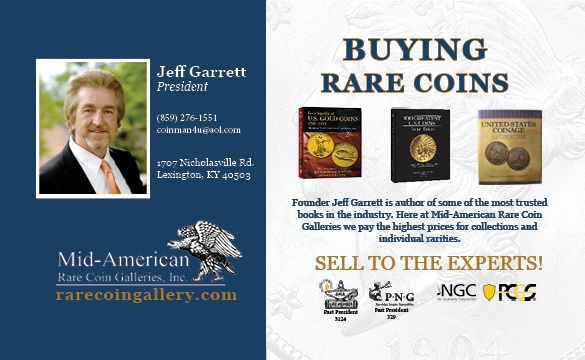
TUTANKHAMUN-ERA SILVER BAR OFFERED
This press release describes a very interesting silver bar from the reign of Tutankhamun offered by Numismatica Genevensis SA. -Editor
Do We Have to Predate the Beginning of Coinage by Half a Millennium?
Auction house Numismatica Genevensis SA offers in its auction 12 on 18 and 19 November 2019 an object that might revolutionize monetary history as we know it. Did the Egyptians of the 18th dynasty already use coins?
On 18 November 2019, auction house Numismatica Genevensis SA in Geneva will offer an object – No. 101 – that will dispute our version of monetary history. The object in question is a silver bar with a cartouche bearing the name of Pharaoh Tutankhamun. This bar has the weight of half a deben which means it was issued in a weight unit corresponding to the currency of account in ancient Egypt. So, do we have to predate the beginning of coinage by more than half a millennium? Were ancient pharaohs already familiar with the concept of "coins"?
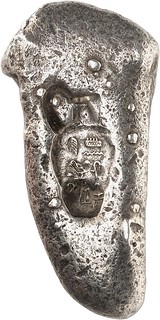
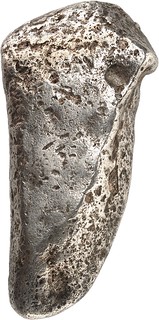
Tutankhamun, around 1345–1327 BC. Silver bar weighing about half a deben. Produced in a Phoenician trading house or in Lebanon. Drop-shaped flan with a cartouche in the form of a jug, in it the legend "Tutankhamun, ruler of Heliopolis in Upper Egypt" written in hieroglyphs. 41.55 g. Valloggia, bar A (this specimen).
The Object
The object on offer is a drop-shaped bar made of high-quality silver. The silver content of 98.54% indicates that the material is artificially refined silver and presents the
highest grade of fineness a goldsmith was able to achieve back then.
Its weight of 41.55 g differs by 8.7% from 45.5 g – which would be the weight of half a deben or 5 kites. Such a deviation is quite acceptable, as we know from other numismatic epochs.
The cartouche in the form of a jug bears the name of Pharaoh Tutankhamun and calls him ruler of Heliopolis in Upper Egypt. The inscription supplies us with a date: Tutankhamun reigned between 1345 and 1327 BC.
The bar offered at Numismatica Genevensis SA is one of two pieces from the collection of Roger Pereire, who died already in 1968. His daughter sold her father's collection at the beginning of the 70s. Since then, the silver bar has been part of a Swiss private collection.
The Egyptian Currency System
Actually, it should not come as a surprise that such silver bars with the function of a coin do exist. We know that standardized bars have existed since the Bronze Age. Bars made
of bronze were certainly traded as standard pieces of raw material. Perhaps they were even used as a form of primitive money. If we remember that the Egyptians – just like the
inhabitants of Mesopotamia – had a highly differentiated economy and a complex accounting system used constantly in the daily economic life, a silver bar of the same currency
system – which might have been used as a means of payment – will perfectly fit into the picture.
Prices of everyday goods, wages and units of account, which were used to calculate the former two, are written on hundreds of ostraka from the workers' village on the West Bank of Thebes. Craftsmen and merchants of the New Kingdom calculated in silver, copper and grains – depending on the value of the good. Larger sums were expressed in silver, everyday sums in copper and small amounts in grains. In very rare cases, the price was even indicated in debens of gold. In addition to debens of silver, also shenati of silver were used on the West Bank of Thebes – these units were worth at first 5 and later 4 debens of copper.
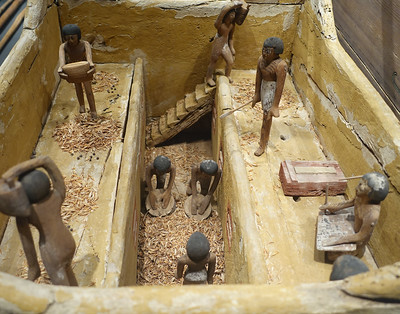
A scribe in the granary writes down exactly how much grain has been delivered. From the burial equipment of a Gemniemhat. Saqqara, around 1990 BC. Ny Carlsberg Glyptothek. Photo: UK.
Twenty Pieces of Silver for the Slave Joseph
Let us have a look at some practical examples. A tax inventory made on order of Ramses III (1188–1156) mentions, among other things, the income accrued in copper (26,320 debens),
linen (3,722 debens), incense, honey and oil (a total of 1,047 debens), grains (309,950 debens), flax (64,000 debens) and waterfowls (289,530 debens).
A bill to Erenofre, a lady of a house who bought a female slave, proves that ordinary people used debens and kites for their calculations, too. The cost amounted to 5 debens of silver. She made use of the content of her linen cupboard in order to get the money together and gave the merchant a blanket of Upper Egyptian cloth worth 3 1/3 kites of silver, a djayt garment of Upper Egyptian cloth worth 4 kites of silver, a dress of fine Upper Egyptian cloth worth 5 kites of silver and several further objects until the amount of 5 debens of silver was paid.
The step from such a sophisticated accounting system to small silver bars worth half a deben is quite small. And actually, this would make a story that has been known to us for centuries appear in a completely new light – at least in terms of its significance for monetary history: The book of Genesis (Gen 37.28) describes how Joseph was sold to Midianites merchantmen. 20 pieces of silver changed hands. Until now, we interpreted them as pieces of raw silver, which were weighed after handing them over. However, if that was correct, wouldn't it have been more logical to speak of their weight instead of their number? And considering that the Egyptian woman paid five debens for the young female slave, these silver pieces could well have been small bars worth half a deben. Relations of price are quite stable. So, when the Edict on Maximum Prices of Diocletian was written, the value of male slaves still was 30 to 50% higher than the value of female slaves – therefore, the price of 10 debens of silver for a strong male slave would be quite realistic.
A Thief Stole a Sack Full of Pieces of Silver
Another text confirms this picture. It reports a theft: A man stole a vessel made of gold at five debens, four jugs made of silver weighing twenty debens and a small sack of
silver bars at eleven debens.
Are There No Similar Pieces or Have They Simply Not Been Taken into Account Yet?
Until now, the numismatic world does not know about similar pieces – however, this does not necessarily mean that they do not exist. Their significance might not have been
recognised by the scholars yet because they are rather inconspicuous objects – at least in the view of an Egyptologist. However, treasures containing bars made of gold and silver
have been found. For example, the treasure from the Temple of El Tod, which was divided between the Louvre and the Egyptian Museum in Cairo, included silver bars with a total
weight of 8.87 kg. Perhaps they match the Egyptian weight standard, too.
A New Picture of Monetary History
The bar offered at Numismatica Genevensis SA is a significant indication that minting small bars on the basis of a widespread accounting system that were guaranteed by the mark of
a die was no Lydian-Greek invention. And this would fit perfectly to our knowledge about how the Greek culture made use of foreign innovations in order to develop concepts
suitable for everyday use.
For even though this spectacular bar might have laid the foundation of a working coinage system, the Greeks made this idea suitable for daily use.
Literature:
Manfred Gutgesell, Arbeiter und Pharaonen. Wirtschafts- und Sozialgeschichte im Alten Ägypten. Hildesheim 1989.
David M. Schaps, The Invention of Coinage and the Monetization of Ancient Greece. Ann Arbor 2007.
Michel Valloggia, Note sur deux lingot d'argent de Toutânkhamon, Revue d'égyptologie 68 (2017-2018), pp. 141–152.
To vist the Numismatica Genevensis SA web site, see:
https://www.ngsa.ch/?lang=en
THE BOOK BAZARRE
BYZANTINE GOLD COINS FOUND IN BULGARIA
Here's an article from Bulgaria about the discovery of a hoard of Byzantine gold coins. -Editor
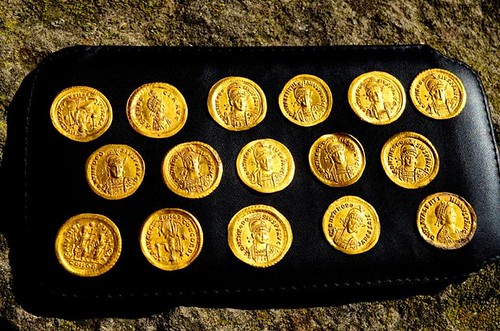
A Byzantine gold treasure from the 5th century Byzantine Era, i.e. the early period of the Eastern Roman Empire (Byzantium), consisting of a hoard of gold coins of Emperor Theodosius II which were probably hidden when the major Roman city of Marcianopolis (Marcianople) was destroyed by Attila's Huns, has been found by archaeologists in Devnya, Northeast Bulgaria.
The newly discovered gold coin hoard consists for the time being of 14 coins featuring the image Emperor Theodosius II (r. 408 – 450 AD), one featuring his wife Aelia Eudocia, and one featuring his first cousin, Emperor Valentian III, Emperor of the Western Roman Empire from 425 until 455 AD, shortly before its collapse.
Among other things, Marcianopolis / Devnya is known for the discovery of one of the largest coin hoards ever found in the world back in 1929: the Devnya Coin Treasure consisting of over 100,000 silver Roman coins, denarii, minted in the 1st – 3rd century AD by a total of 44 Roman emperors and empresses, with a combined total weight of over 350 kilograms.
The total of 16 gold solidi, most of them minted by Theodosius II (r. 408 – 450 AD), the third longest ruling Emperor of the Eastern Roman Empire, popularly known today as Byzantium, have been discovered by archaeologists excavating the ruins of ancient Marcianopolis in Bulgaria's Devnya.
The archaeological team led by Dr. Hristov Kuzov from the Museum of Archaeology in the Black Sea city of Varna at first found 10 of the 5th century Byzantine gold coins. Two more were found the following day, and three more gold solidi were discovered hours later, reports the "Devnya Ancient and Modern" Facebook page.
One of the newly discovered Early Byzantine gold coins was minted in the name of Emperor Theodosius II's wife, Aelia Eudocia.
Found via The Explorator newsletter. To subscribe to Explorator, send a blank email message to: Explorator-subscribe@yahoogroups.com or follow
https://exploratornews.wordpress.com/ -Editor
To read the complete article, see:
HOARD OF
BYZANTINE GOLD COINS HIDDEN DURING HUN INVASION DISCOVERED IN ANCIENT MARCIANOPOLIS IN BULGARIA'S DEVNYA
(http://archaeologyinbulgaria.com/2019/10/26/hoard-of-byzantine-gold-coins-hidden-during-hun-invasion-discovered-in-ancient-marcianopolis-in-bulgarias-devnya/)

QIANLONG CHINESE COIN SWORD
A great Chinese coin sword was illustrated in a piece on Canadian Coin News about the The University of British Columbia's Chung Collection -Editor
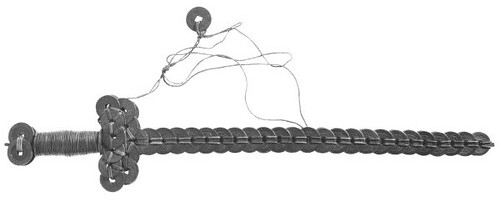
The University of British Columbia's (UBC) Chung Collection explores the province's history with 25,000 artifacts related to the Chinese diaspora's immigration and settlement.
With highlights such as a "coin sword" made of coins from the era of the Qianlong emperor (1736-96), the collection was recently added to the United Nations Educational Scientific and Cultural Organization (UNESCO) "Canada Memory of the World Register," which recognizes documents of profound Canadian significance.
"Coin swords are considered to ward off evil, and bring good luck," reads UBC's online archive
To read the complete article, see:
Coin sword part of UBC's Chung Collection
(https://canadiancoinnews.com/coin-sword-part-of-ubcs-chung-collection/)

GOLD ZODIAC MOHURS OFFERED
This press release highlights an interesting group of gold zodiac mohurs offered by Numismatica Genevensis. -Editor
...This was my own innovation. It had never been done before.
A few days after completing the 12th year of his reign, Mughal Emperor Jahangir had a series of twelve gold mohurs minted. They feature the twelve zodiac signs. In its auction 11, auction house Numismatica Genevensis SA is able to present the largest ensemble of coins from this series that has ever been on offer.
Those who look at the stars nowadays and think about the possibility of exploring other galaxies often forget about the fact that astrology was the mother of modern astronomy. The renowned astronomer Johannes Kepler earned his living by calculating the horoscope for the rich and famous of his time – just think about Emperor Rudolf II and Albrecht von Wallenstein. The resourceful man would have certainly also gotten a well-paid position at the court of Jahangir, the Mughal emperor ruling almost at the same time – from 1605 to 1627. In India, astrology / astronomy was one of the most important sciences, too.
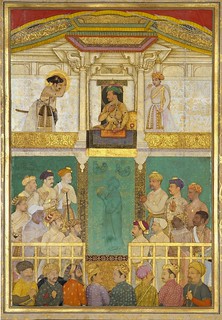 Jahangir
receives Prince Khurram in April 1616. The Royal Library Windsor Castle. – On this miniature, you can clearly identify the coins worn by the courtiers on a long necklace or as
turban pendants.
Jahangir
receives Prince Khurram in April 1616. The Royal Library Windsor Castle. – On this miniature, you can clearly identify the coins worn by the courtiers on a long necklace or as
turban pendants.
A Ruler's Life Determined by the Stars
Whether Greek, Arabian or Persian texts – the astrological knowledge of the entire world was gathered at the court of the Mughal emperor. The astrologers came from all over the world, too. We know about these facts thanks to marvellous miniatures that give us insight into the life at the court of Mughal emperors.
For example, there are miniatures depicting the birth of a prince. While women assist the birth-giving woman in a separate chamber, the ruler waits in front of it and is entertained by musicians. There are astrologers with an hourglass in the chamber in order to record exactly at what time the child was born. This is necessary for calculating the exact horoscope.
And a horoscope was calculated for every prince and for every other citizen of the Mughal Empire who could afford it. Jahangir's father, Akbar, to name just one example, was so proud of the auspicious minute of his birth that he had his chronicler Abu l'Fazl record it conscientiously for posterity.
Of course, such a horoscope was calculated for Jahangir as well. However, we can only get an actual idea about how omnipresent astrology was in the everyday life of the Mughals if we take a look at the coinage of Jahangir.
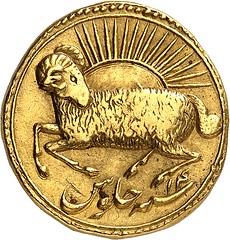
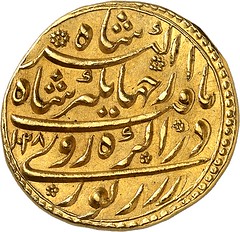
Gold mohur featuring the zodiac sign of Aries, minted in 1619 in Agra
A Royal Collection: A Unique Ensemble at Numismatica Genevensis
In the context of Numismatica Genevensis' auction 11 "A Royal Collection", on 18 November 2019 an impressive amount of Mughal coins will be sold. Among them are both coins with the portrait of Jahangir and the largest ensemble of extremely rare gold mohurs featuring zodiac signs that has ever been on offer. They illustrate the major importance Jahangir assigned to his gold coins and to astrology.
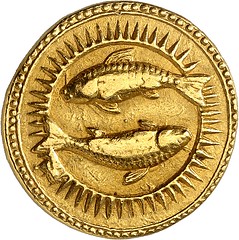
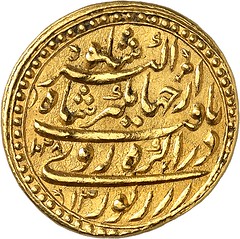
Gold mohur featuring the zodiac sign of Pisces, minted in 1619 in Agra
The Beginning of the 13th Year of Jahangir's Reign
Akbar died on 27 October 1605. His son Jahangir unofficially took over the rule on 3 November of the same year. Nevertheless, he waited until his astrologers predicted an auspicious day for it to officially ascend the throne. It was the evening of the 10 March 1606, and therefore Jahangir counted his years of reign from 11 Zíl ka'da / 2 Farwardín / 10 March.
Astrologically, Jahangir's reign began in the moment when the sun moved from the sign of Pisces to the sign of Aries. This is indeed a wonderful moment, which is still celebrated today in many countries of the world as Nowruz (= new day).
Jahangir celebrated this jubilee every year and, of course, the festivities were especially splendid on the occasion of completing 12 years of reign. After all, twelve is a sacred number in Islam and Hinduism – unlike the number of ten, which only received high honours in the course of the French Revolution. Additionally, Jahangir just had achieved a decisive victory over Bijapur and Gujarat.
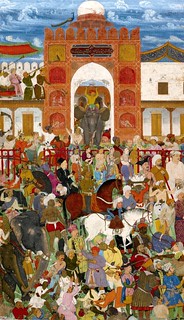 Celebration on the occasion of Jahangir's reign's jubilee, around 1615–1618. Institute of Oriental Studies, Saint Petersburg. – In the lower third we can see a servant of the
palace, who throws coins from a bowl to the people fighting over them.
Celebration on the occasion of Jahangir's reign's jubilee, around 1615–1618. Institute of Oriental Studies, Saint Petersburg. – In the lower third we can see a servant of the
palace, who throws coins from a bowl to the people fighting over them.
As every year, there were lots of ceremonies on the occasion of the reign's jubilee. The Mughal emperor distributed new titles and positions among his court officials and military servants. He was weighed so that his weight could be distributed in gold and silver among his subjects. A part of the gifts consisted of magnificent gold coins, which were not meant to be used in order to cover the expenses of everyday life. They were awarded as honorary gifts, just like it was the case with a gnadenpfennig in the western world. The person receiving the gift was expected to have one of the pieces mounted in a sophisticated manner in order to wear it either as a turban pendant or on a long necklace as a symbol of loyalty to Jahangir. Figure 1 illustrates how these coins were worn by courtiers.
On the occasion of this jubilee, the celebrations must have been particularly sumptuous. Jahangir himself states in his report "Wakiatijahangir" that there was a fabulous party with a lot of wine. And – he says – because the servants standing especially close to the throne were given a particularly large amount of wine, they became quite merry.
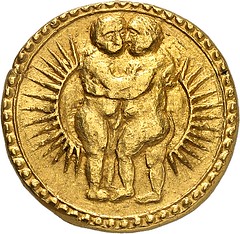
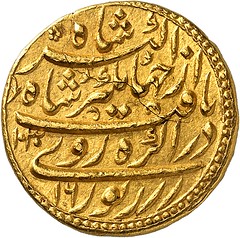
Gold mohur featuring the zodiac sign of Gemini, minted in 1621 in Agra
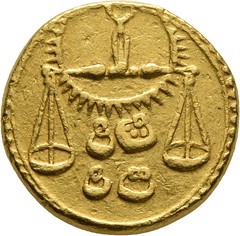
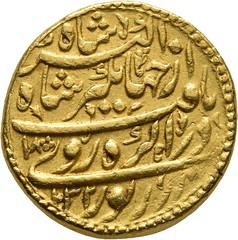
Gold mohur featuring the zodiac sign of Libra, minted in 1623 in Agra
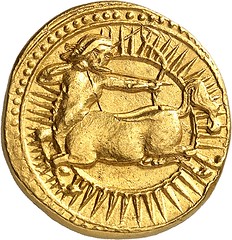
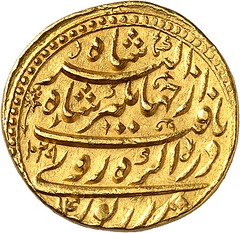
Gold mohur featuring the zodiac sign of Sagittarius, minted in 1620 in Agra
A Series for the 13th Year of Jahangir's Reign
Did Jahangir decide to mint coins featuring zodiac signs on this day? In any case, the first edition of the series of coins with zodiac signs depicts the sign of the first month of his year of reign, the Aries. In his report "Wakiatijahangir" he tells us: "Formerly it was customary to strike my name on one side of the coin and that of the place, and the month, and the year of the reign on the obverse. It now occurred to my mind that, instead of the name of the month, the figure of the sign of the Zodiac corresponding to the particular month should be stamped. For instance, in the month of Farwardín the figure of a Ram, in Urdíbihisht that of a Bull, and so on; that is, in every month in which a coin might be struck, the figure of the constellation in which the Sun might be at the time should be impressed on one side of it. This was my own innovation. It had never been done before." The original manuscript is even said to have contained depictions of all twelve issues.
The mintage of the series was ordered on 23 Farwardín 1616. It continued for many years. All twelve zodiac signs are known of in gold, five of them in silver.

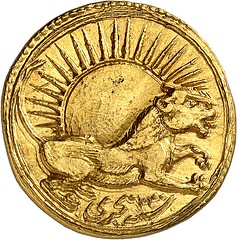
Gold mohur with the portrait of Jahangir, a glass of wine in his right hand
Today, these pieces are extremely rare because the depictions – just like those of Jahangir's other coins – were extremely controversial. The fact that astrologers tried to understand the kismet, which had been set out by Allah, was considered a sin by some pious Muslims. The depiction of zodiac signs on coins almost seemed to be sacrilegious. They were also irritated by Jahangir having his own portrait depicted on coins – sometimes even holding a glass of wine in his hand! Jahangir was to remain the only Mughal emperor who dared to do that. Already his son Shah Jahan was of a different opinion, even though he was also concerned about the balance between Muslims and Hindus. He ordered that Jahangir's controversial coins be melted down. Even the possession and the usage of these coins is said to have been punished by death. Of course, this act also might be connected to the fact that Shah Jahan rebelled against his father during the last years of Jahangir's life. Those who still wore Jahangir's coins on their turbans did this to express that they did not support the new Mughal emperor.
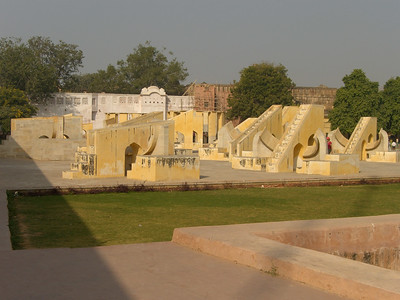
Jantar Mantar: Jai Singh' observatory in Jaipur
A Rich Astrological-Astronomical Legacy
Everybody who has seen the huge astronomical observatory built by Jai Singh II between 1727 and 1733 at Jaipur knows that the rich Indian astrological tradition became a science in the 18th century. It houses fourteen buildings that serve the purpose of collecting astronomical data. At the time it was built, it was only one of five observatories in the empire of the Maharaja of Amber. Today, it is a UNESCO World Heritage Site visited by tourists from all over the world.
An Indian space probe reached Mars in 2014 and currently they are working on manned space flights – India's tradition of space exploration dates back to early modern times, when people both in Europe and in India still believed that stars determined the fate of human beings.
To vist the Numismatica Genevensis SA web site, see:
https://www.ngsa.ch/?lang=en

CARE HOME SEEKS PRE-DECIMAL COINS
A care home in Worcester, England is seeking pre-decimal coins to help jog the memories of older people. -Editor
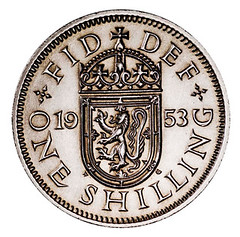 DONATIONS of old coins are being
requested by a care home to help jog the memories of older people.
DONATIONS of old coins are being
requested by a care home to help jog the memories of older people.
Staff at Perry Manor Care Home hope the pounds, shillings and pence could help their residents remember their earlier years and spark conversations about the memories.
Tiffany Thompson, lead lifestyle co-ordinator, said: "The idea for this scheme came about after talking to residents.
"To be able to see and hold the old currency once again will offer residents a fantastic opportunity to reminisce, hopefully sparking long forgotten memories, which can be especially beneficial for people living with dementia.
James Wright, customer relations manager for Care UK, said: "We are always finding new activities for residents to take part in and we want to build an old coin collection, so that residents can enjoy counting out the coinage to the value of goods.
The old coins were used before decimalisation in February 1971 to streamline the process of handling money.
Great idea. See the article for contact information if you'd like to donate. This is like the coin "petting zoo" discussed last week, but for a special audience. -Editor
To read the complete article, see:
Old coins wanted to spur memories for residents of Perry
Manor, Worcester (https://www.worcesternews.co.uk/news/17999339.old-coins-wanted-spur-memories-residents-perry-manor-worcester/)
To read the earlier E-Sylum article, see:
THE ANCIENT COIN PETTING ZOO (https://www.coinbooks.org/v22/esylum_v22n43a20.html)
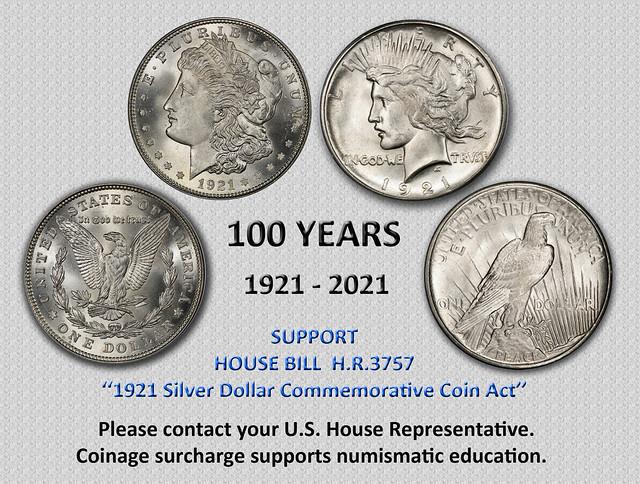
THE TUESDAY CLUB MEDAL
Here's some more information on the Tuesday Club medal mentioned elsewhere in this issue (in the article on the Headless Soldier piece), from a 2014 Heritage auction lot. -Editor
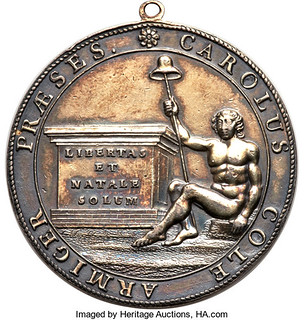
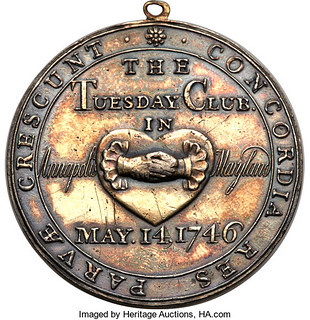
Betts-383. 1746 Annapolis Tuesday Club. Silver, with hanger. VF. 43.7 mm, 26.3 gm. Unsigned. The editors of Betts believed John Kirk might have engraved the dies. Forrer's Biographical Dictionary of Medallists attributes the medals to Kirk, a prolific medallist in London, born in 1724. However, a consensus has not been reached as to the identity of the engraver.
The Tuesday Club, a gentlemen's social club, was founded by Annapolis doctor Alexander Hamilton (no relation to one of the Founding Fathers several decades later) in May 1745 and was patterned after a club in his native Edinburgh, Scotland. The group met bi-weekly for eleven years, with the members eating and drinking together, and engaging in humorous banter and singing to name but a few of their many activities. Among the members was Jonas Green, publisher of the Maryland Gazette and printer of Maryland colonial paper money. All were assigned nicknames, with Hamilton dubbing himself Doctor Loquacious Scribble. He thoroughly documented the activities and conversations of the Tuesday Club. Books concerning the club have appeared as recently as the past few decades and have been well received due to the wit and comic nature of the material.
The members authorized production of these medals in 1748 and distributed them at the club's fifth anniversary in 1750. The obverse features a heart in the center, with two clasped hands in the foreground. "Annapolis" appears in script letters to the left, with "Maryland" present at right. THE TUESDAY CLUB appears above the heart, with MAY 14, 1746 below. The surrounding text translates as, "happily joining like-thinking fellows" according to Jaeger and Bowers in 100 Greatest American Medals and Tokens. Liberty is represented as a naked boy on the reverse. He is depicted seated with a pole and liberty cap near an altar. The inscription on the altar translates as, "liberty and homeland only." The outer text translates as, "Charles Cole, Esquire, President," commemorating the first president of the club.
These pieces are extremely rare, with this example one of only four known in gilt silver, with a sole known copper medal. The other three examples in gilt silver are all ensconced in institutional holdings, leaving this as the sole collectible example. Light wear appears on the high points of the design on this medal displaying attractive toning in shades of dark gold, silver-gray, teal, and violet. A few scattered light scratches appear, primarily surrounding the obverse center. Minor rim nicks are present.
Ex: John Work Garrett; Holdings of The John Hopkins University, private sale; Sotheby's (New York, 12/1993), lot 635; Lucien M. LaRiviere Collection, Part II (Bowers and
Merena, 3/2001), lot 2067.
From The John W. Adams Collection.
To read the complete lot description, see:
Betts-383. 1746 Annapolis Tuesday Club. Silver, with
hanger. (https://coins.ha.com/itm/betts-medals/betts-383-1746-annapolis-tuesday-club-silver-with-hanger-vf/a/1201-3062.s)
To read excerpts from The History of the Ancient and Venerable Tuesday Club, see:
The Tuesday Club of Annapolis, Maryland
(http://nationalhumanitiescenter.org/pds/becomingamer/ideas/text4/tuesdayclub.pdf)
To read more at the Newman Numismatic Portal, see:
https://nnp.wustl.edu/library/searchwithterms?searchterm=tuesday%20club

ROYAL MINT SCRAPS OCTOBER 31 BREXIT COINS
Pablo Hoffman of New York City passed along this article from The Independent on the Royal Mint's scrapping of commemorative coins created to mark the UK's planned exit from the European Union on October 31. Thanks. -Editor
They had been designed to invoke the spirit of a post-Brexit nation, but now a run of commemorative 50p coins emblazoned with 31 October - the date the UK was supposed to leave the European Union (EU) - will be scrapped, shredded and melted down.
Originally they were supposed to be minted in time for this Friday. They were part of an ongoing initiative to commemorate the day Brexit is finalised that was first pitched by former chancellor Philip Hammond during his time in No 11.
However HM Treasury has confirmed the approximately 3 million coins would be recycled now that the EU has agreed a Brexit extension of 31 January with the UK Government.
"We will still produce a coin to mark our departure from the European Union, and this will enter circulation after we have left," a spokesman said.
The dates on the coin may continue to change but the text – Peace, prosperity and friendship with all nations – has remained constant.
The phrase echoes that of third US president Thomas Jefferson in his inaugural address - in which he vowed "peace, commerce, and honest friendship with all nations" with the caveat "entangling alliances with none".
To read the complete article, see:
Brexit 50p: Limited edition
coins to be shredded and melted down after Boris Johnson misses 31 October deadline
(https://www.independent.co.uk/news/uk/politics/brexit-50-pence-coins-melted-down-shredded-boris-johnson-31-october-deadline-a9175296.html)
Thanks also to Dick Hanscom for these additional articles. None of the articles illustrate the planned coins. Will any be rescued from the melting pot? It would be a shame if none are saved for posterity. -Editor
To read the complete article, see:
Brexit: Special coins to be recycled (https://www.bbc.co.uk/newsround/50218250)
Brexit 31 October commemorative coins to be "recycled"
(https://en.mercopress.com/2019/10/29/brexit-31-october-commemorative-coins-to-be-recycled)
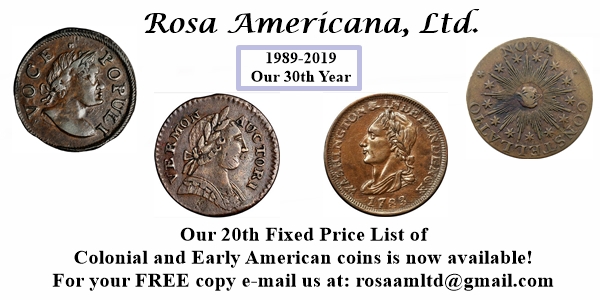
FIRM REPLACES MEN ON BANKNOTES WITH WOMEN
There was been much discussion in recent years over the lack of representation of women on paper money around the world, including the controversial (to some) plan for placing Harriet Tubman on a U.S. banknote. A spokesman for the London-headquartered firm Stenn passed along this summary of the company's recent study of world banknotes. Thank you. -Editor
The recent announcements of JMW Turner as the new face of the £20 note, and Alan Turing being featured on the new £50, have reignited the debate about gender representation on banknotes.
Cross-border trade finance provider Stenn has conducted some research into the presence of women on banknotes around the world at
https://stenn.com/dollar-diversity-replacing-men-on-banknotes-with-women/
We found that:
- 117 of the 180 legal tender currencies around the world feature people
- 88% of these people are men
- When excluding Queen Elizabeth, this figure rises to 91%
- 69 of the 177 currencies are 100% male, including the US dollar, Chinese yuan, and Indian rupee
- Only 3 currencies have a gender balance less than 50% male when excluding the Queen – the Danish krone, Swedish krona, and Australian dollar
- To readdress this imbalance, we replaced men with women on some of the world's major banknotes. We chose women with the most Wikipedia pageviews in the 18 months between January 2018 and June 2019. Living women and royalty were excluded.
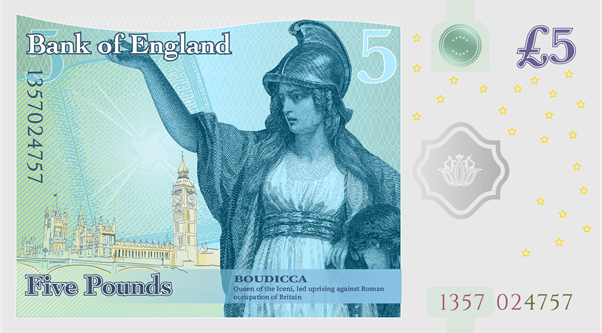
For the UK, Conservative Prime Minister Winston Churchill is replaced on the £5 note by anti-imperialist and rebel Boudicca. And on the £20 note, the mother of computer programs Ada Lovelace (who was perhaps unlucky not to be chosen for the new £50) replaces Adam Smith, the father of economics. The £10 already shows a woman in Jane Austen, while it seemed unfair to remove Alan Turing from the £50 so soon after his announcement.
We've also replaced men with women on US dollar bills, Chinese yuan and Japanese yen, as well as adding women to the Russian rouble and the euro.
Great concept. Here are a few that particularly caught my eye. See the complete article for more. -Editor
£20 – Ada Lovelace
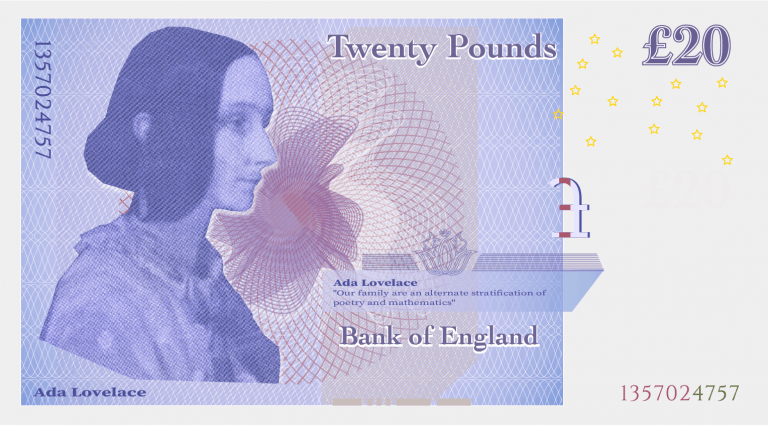
The only legitimate daughter of the poet Lord Byron, Ada Lovelace was raised by her mother to love mathematics and logic. In 1833 she was introduced to the famous mathematician Charles Babbage, and the pair became close friends.
Babbage was working on plans for an Analytical Engine, a machine that is considered one of the earliest computers. Lovelace wrote the first published computer programs to accompany an article that she had translated about the Analytical Engine. As such, she is known as one of the first computer programmers.
Lovelace was able to see the capabilities of computers beyond mere calculations, which was a rarity for her time. Unfortunately, she died of cancer at only 36, before her undoubtably huge potential could be fully realised. Shortlisted for the new £50 note, she was perhaps unlucky not to be chosen.
Germany: €10 – Marlene Dietrich
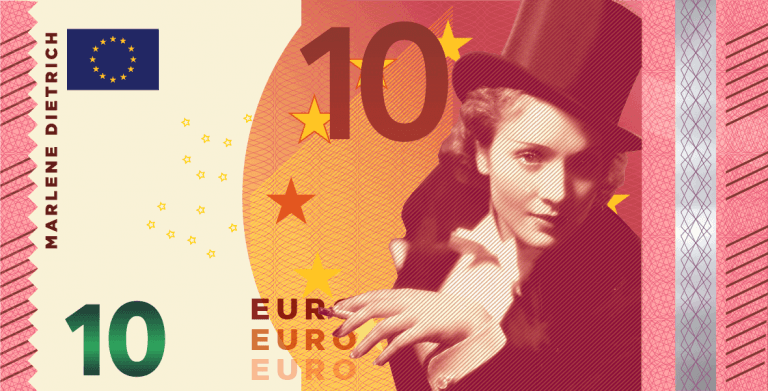
As an actress and singer, Marlene Dietrich's career spanned 70 years. In Weimar Berlin she acted on the stage and in silent films, before moving to Hollywood to make films in the 1930s.
Dietrich was approached by Nazi Party officials and offered a lucrative contract to return to Germany and make films for the Nazis. She declined due to her strong political convictions. In the late 1930s she created a fund with several other German exiles to help Jews and dissidents escape the Nazi regime.
In 1939 Dietrich renounced her German citizenship and became a US citizen. During the Second World War she performed for Allied troops and helped sell war bonds. She received the Medal of Freedom in 1947 for her wartime work.
After the war she worked mainly as a cabaret artist and singer, performing live around the world up until her 75th birthday. She died aged 90 as an enduring icon of stage and screen.
Japan: ¥1000 – Tomoe Gozen
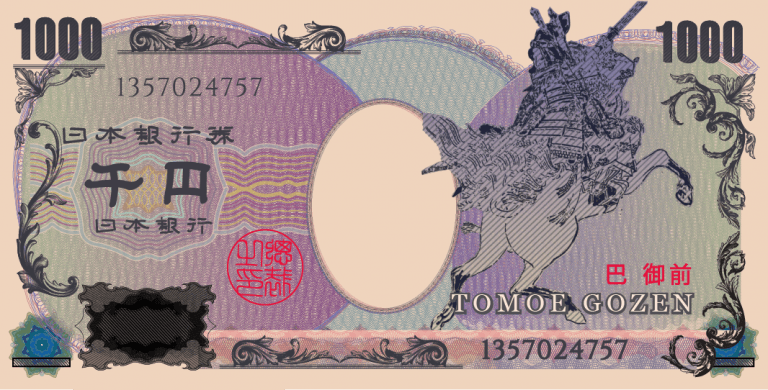
Tomoe Gozen was a female samurai considered the first general of Japan. She served in the war that led to the establishment of the first shogunate in Japan. Although details about her personal life are contested, the details about her skill as a warrior are well recognised.
At the Battle of Yokotagawara Tomoe defeated and beheaded seven samurai, at a time when collecting heads was the ultimate sign of military prowess. In 1184 she led 300 outnumbered samurai in battle against 6,000 cavalry troops in the Battle of Awazu. Although she fought bravely, her troops were defeated, with Tomoe one of only five survivors.
She was ordered to desert the battlefield by her commander, which was considered an extreme disgrace. To redeem her honour, Tomoe beheaded one final warrior. What happened to her after her last battle is unknown. There are differing accounts saying she was either forced to become a concubine, continued to avenge her fallen comrades or that she even became a Buddhist nun.
Whatever her fate, her legacy as a warrior worth a thousand lives on through the epic Tale of the Heike, which is still read today.
Highlighting accomplished women on banknotes is a perennial topic. Money artist J.S.G. Boggs created his Women's Series of fantasy U.S. notes beginning in the 1990s with his famous $100 Harriet Tubman note. -Editor
To read the complete article, see:
Dollar Diversity: Replacing Men on Banknotes with Women
(https://stenn.com/dollar-diversity-replacing-men-on-banknotes-with-women/)
GETTY CENTER WELL-FORTIFIED AGAINST WILDFIRES
We recently discussed having an evacuation plan for collections in the event of a natural disaster such as an approaching flood or fire. Like many of us I'm sure, I was concerned to hear this week of the Getty Fire raging near the Getty Center in Los Angeles, home to countless priceless works of art and antiquity. An article in Art Daily addresses the concerns with an interesting description of the Center's construction and safety measures. -Editor
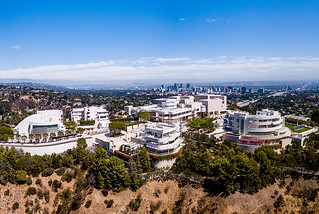 Nestled in the mountains above Los Angeles, the
Getty Center is located in an area prone to wildfires -- but museum officials say its priceless collection is safe within the walls of a fireproof "beautiful
fortress."
Nestled in the mountains above Los Angeles, the
Getty Center is located in an area prone to wildfires -- but museum officials say its priceless collection is safe within the walls of a fireproof "beautiful
fortress."
On Monday morning, security guards listened in to alarming calls between firefighters. A fire had broken out extremely close to the building.
The "Getty Fire" grew quickly within a few hours, forcing stars such as LeBron James and Arnold Schwarzenegger to evacuate their homes in nearby, exclusive residential areas.
Despite the flames -- which spread over 300 hectares -- and the smoke, authorities said they never considered moving any of the 125,000 artworks and 1.4 million documents that comprise the museum's unique collection.
"Our art is incredibly secure," communications vice-president Lisa Lapin told AFP. "The Getty was constructed to house valuable art and keep it very safe from fires, from earthquakes, from any type of damage."
"We are really built like a beautiful fortress and everything inside is quite safe," she added.
Architect Richard Meier built the center two decades ago, at a cost of $1 billion.
As well as the museum, it houses a research hub and a foundation with around 1,000 employees.
The building is constructed of fire-resistant travertine stone, as well as cement and steel. Its roofs are covered with crushed stone to prevent embers igniting, and even in the gardens, resilient plants were chosen.
Inside, the galleries can be separated off with a vault-like double door that is practically impenetrable.
Ventilation system
With the Getty empty at dawn on Monday, protection measures kicked in with the activation of the center's irrigation system, drawing on a million-gallon water tank.
The building's ventilation system switched to an internal recycling system, similar to those found in cars, preventing smoke from entering rooms from the outside.
The Getty is currently hosting a special exhibition of works by Edouard Manet.
Lapin said some art owners had contacted the museum expressing concern about the fire, but were quickly informed about the building's fireproof structure, made up of 300,000 travertine blocks and 12,500 tons of steel bars.
Monday's blaze is not the first to skirt the building.
Two years ago, the "Skirball Fire" -- named for its proximity to another nearby cultural center -- triggered the same safety measures, although it only affected the far side of an adjacent freeway.
To read the complete article, see:
Getty Center museum: A 'beautiful fortress'
against Los Angeles fires (https://artdaily.cc/news/118004/Getty-Center-museum--A--beautiful-fortress--against-Los-Angeles-fires#.Xb10nppKhPY)
The rest of us, of course, don't have a billion dollars to spend constructing a disaster-proof fortress. If you haven't already read it, please see the earlier article by Harry Rinker. -Editor
To read the earlier E-Sylum article, see:
WHAT'S YOUR COLLECTION EVACUATION PLAN? (https://www.coinbooks.org/v22/esylum_v22n42a24.html)

LOOSE CHANGE: NOVEMBER 3, 2019
Here are some additional items in the media this week that may be of interest. -Editor
Mexican Libertad Series Surprises
Lou Golino published a new piece on CoinWeek about the latest developments in the Libertad series. -Editor
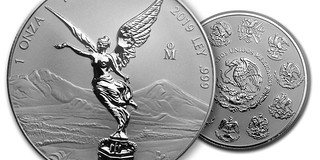 As Pat Stovall, a longtime dealer in
Mexican coins and the stepson of the late "Dean of American Experts on Mexican Numismatics" Don Bailey, noted recently: "The never-ending story of Mexican coins is that something
new comes to light almost every day.
As Pat Stovall, a longtime dealer in
Mexican coins and the stepson of the late "Dean of American Experts on Mexican Numismatics" Don Bailey, noted recently: "The never-ending story of Mexican coins is that something
new comes to light almost every day.
In an interview for CoinWeek, Pat explained that while attending a coin show in Arizona during the previous week, a collector showed him a coin he had never seen and that he told the individual he would need to check into it before he could offer his opinion. The coin in question was a 2014-dated, 100-Peso reproduction of a famous classic Mexican coin that was part of the Numismatic Heritage Series the Casa de Moneda (the Mexican Mint) issued for several years starting in 2011. The unusual thing is that the coin was one that was part of the 2013 set (Series III), and the collector said he was told that 100 of them were made (whereas 8,000 are in the 2013 sets).
This is just one example of how fascinating collecting modern Mexican coins can be.
To read the complete article, see:
The Coin Analyst: Mexican Libertad Series Surprises Again
(https://coinweek.com/bullion-report/the-coin-analyst-mexican-libertad-series-surprises-again/)
Little Leather Pouch Coin Find
In his David Kahn Rare Coins November 2019 News and Newps newsletter David Kahn writes:
One of the coolest deals we've run into lately was the small group of gold dollars we bought from our buddy Les Stevenson in Asheville, NC. Perhaps you read the cover story in Coin World about the incredible hoard of gold coins he bought a while back...if not, check it out here.
The story is amazing (and 100% true...I saw the entire package with my own eyes in the shop), but any doubts you may have about this sort of thing will be instantly put to rest when you see the coins. There is simply no way to fake the skin that these coins exhibit. They all look the same, they display the same utter originality, the luster is completely undisturbed (save for the couple that saw some actual circulation) and the eye appeal is stunning. They are not the highest graded coins available...the few larger denomination coins in the hoard get that honor - my supposition is that those were obtained at a bank when new while the gold dollars were saved from what came their way - but they make up for that with breathtaking originality. They were all put away c.1859, and simply left alone until sold to Les in 2019.
A few of these gold dollars have already been sold (I sneaked 2 of them onto the website a couple weeks back with little fanfare...they lasted mere hours), a few are being offered in our unreserved ebay auctions
Here's an excerpt from the Coin World piece. See the complete article online. -Editor
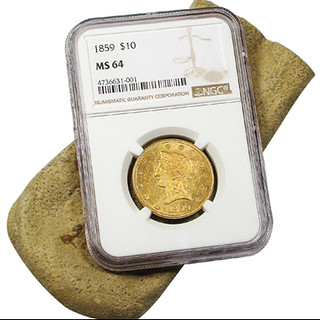 The pouch held 16 gold dollars, mostly from the
1850s and from the Philadelphia Mint except for one AU-55 1851-C Coronet gold dollar struck at the Charlotte Mint; four gold $2.50 quarter eagles; one Indian Head gold $3 coin;
one gold $5 half eagle; the lone $10 eagle; a single gold $20 double eagle; and a 1924 Huguenot-Walloon Tercentenary silver half dollar.
The pouch held 16 gold dollars, mostly from the
1850s and from the Philadelphia Mint except for one AU-55 1851-C Coronet gold dollar struck at the Charlotte Mint; four gold $2.50 quarter eagles; one Indian Head gold $3 coin;
one gold $5 half eagle; the lone $10 eagle; a single gold $20 double eagle; and a 1924 Huguenot-Walloon Tercentenary silver half dollar.
The 1854 Indian Head $3 coin was graded and encapsulated NGC MS-65; and the 1851 Coronet double eagle was graded NGC MS-62+.
Stevenson said the sibling owners of the coins have currently retained the $3 coin and are not selling it at this time.
To read the October 4, 2019 Coin World article, see:
Finest known 1859 gold $10 eagle among family heirlooms
(https://www.coinworld.com/news/us-coins/finest-known-1859-gold-10-dollar-eagle-among-family-heirlooms)
Unique WWI Gold Medal For Honoring WWI Allied Commander-in-Chief
Jeremy Bostwick published a nice Stack's Bowers blog article about a unique WWI-related medal offered in the firm's upcoming Baltimore Numismatic Americana sale. -Editor
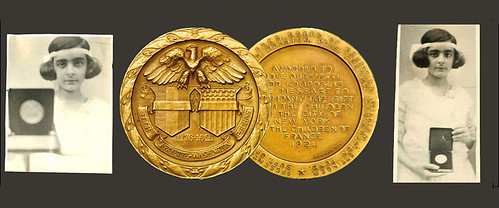
To read the complete article, see:
The General and the Student—A Personalized, Unique Gold Medal Following the Brutality of
World War I (https://www.stacksbowers.com/News/Pages/Blogs.aspx?ArticleID=Unique-Gold-Medal)
Trump Tweets Faked Photo of Hero Dog Getting a Medal
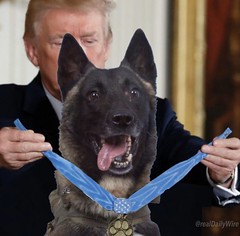 President Trump on Wednesday
shared an altered photograph of himself placing a medal around the neck of the dog injured in the raid last weekend that led to the death of Abu Bakr al-Baghdadi, the Islamic
State's leader.
President Trump on Wednesday
shared an altered photograph of himself placing a medal around the neck of the dog injured in the raid last weekend that led to the death of Abu Bakr al-Baghdadi, the Islamic
State's leader.
Mr. Trump has spoken of the dog, whose name Newsweek reported is Conan, in glowing terms in the days since the raid, which culminated with Mr. al-Baghdadi detonating a suicide bomb, killing himself and several children and injuring the dog.
To read the complete article, see:
Trump Tweets Faked Photo of Hero Dog Getting a Medal
(https://www.nytimes.com/2019/10/30/us/politics/trump-dog.html)
THE SHREK DONKEY COIN
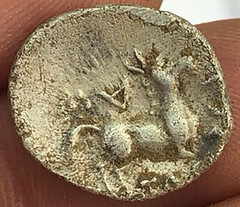 A TREASURE hunter was stunned when he
unearthed an ancient coin with an engraving of Donkey from Shrek on it.
A TREASURE hunter was stunned when he
unearthed an ancient coin with an engraving of Donkey from Shrek on it.
Ron Silvester, 69, was metal detecting for the very first time when he found the 2,000-year-old silver coin in a field in Buckinghamshire.
It was later identified as a 'Tasciovnos Ver' coin, which dates back to the Iron Age, a time when Britain was ruled by warring tribes.
In its prime the piece would have depicted a noble horse but over time parts of the face have faded away.
What is left of the engraving is an uncanny resemblance to the much-loved donkey that is voiced by Eddie Murphy in the Shrek movies.

To read the complete article, see:
MONEY MULE Treasure hunter finds ancient coin ‘with engraving of Donkey from
Shrek' in Buckinghamshire (https://www.thesun.co.uk/tech/10245414/treasure-hunter-coin-donkey-shrek-buckinghamshire/)
FEATURED WEB PAGE: COIN STRIKING STANDARDS
This week's Featured Web Page is suggested by Howard Daniel - the Royal Mint's Coin Collector's Guide to Striking Standards. Thanks.The Royal Mint strikes coins to three different standards for both investors and collectors: Proof, Brilliant Uncirculated and Bullion. If you've heard these terms being used but are unsure what they mean, read on to find out more about the difference between these coins.
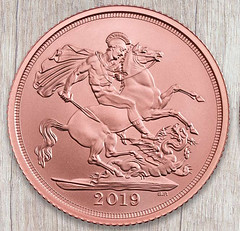
www.royalmint.com/discover/coin-collecting/
striking-standards/

